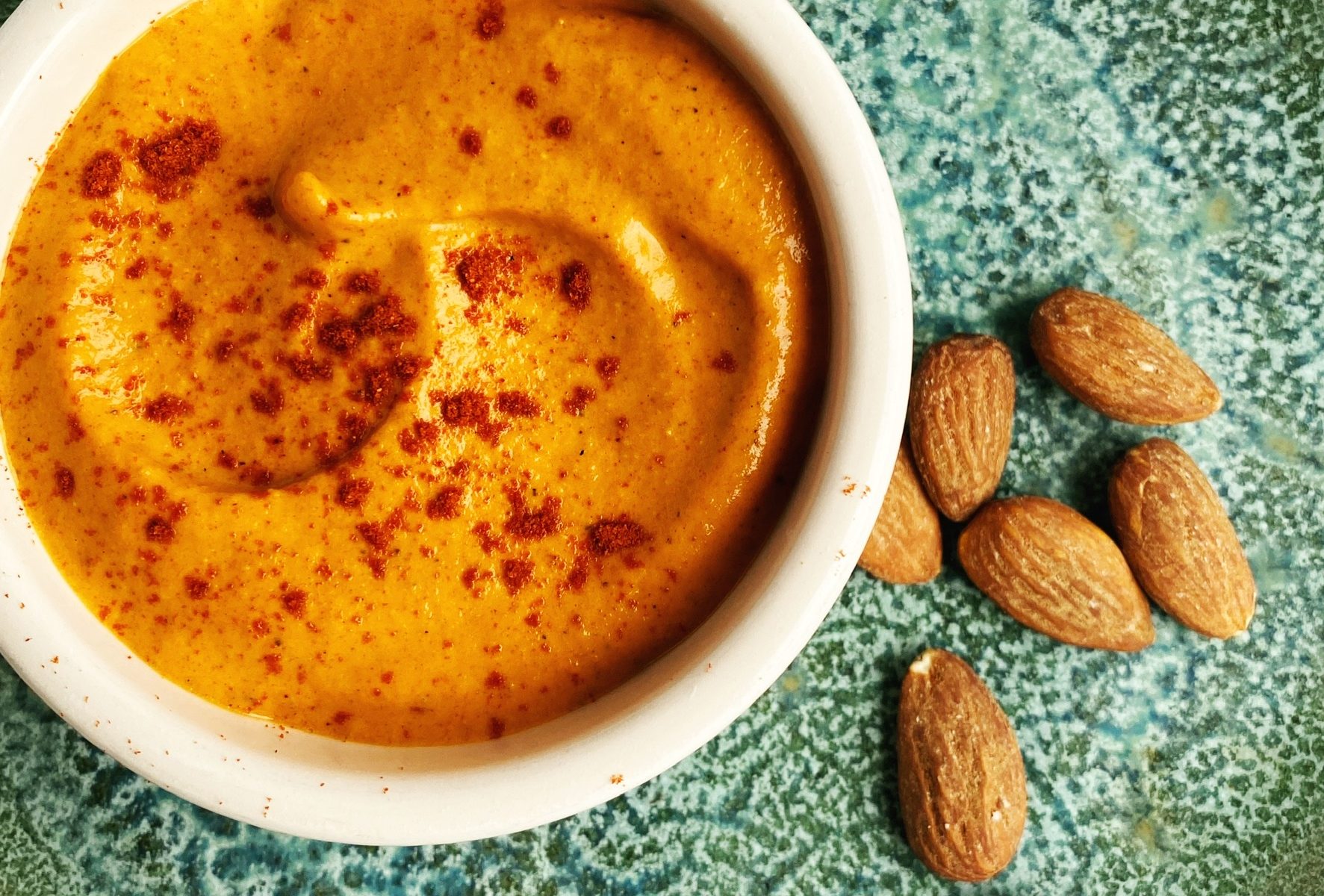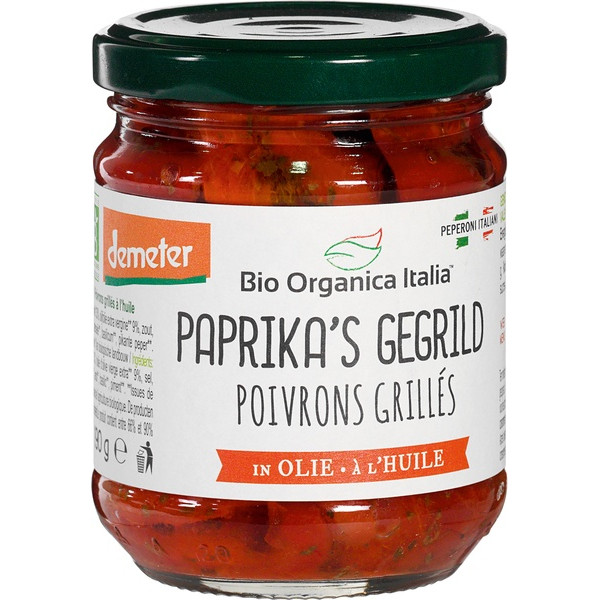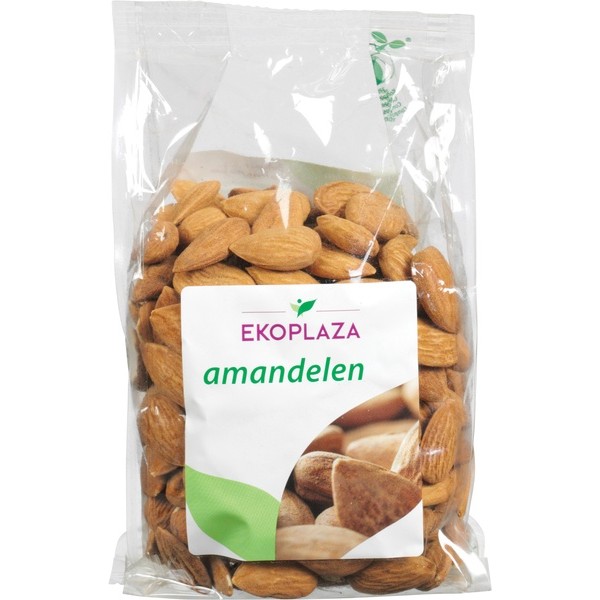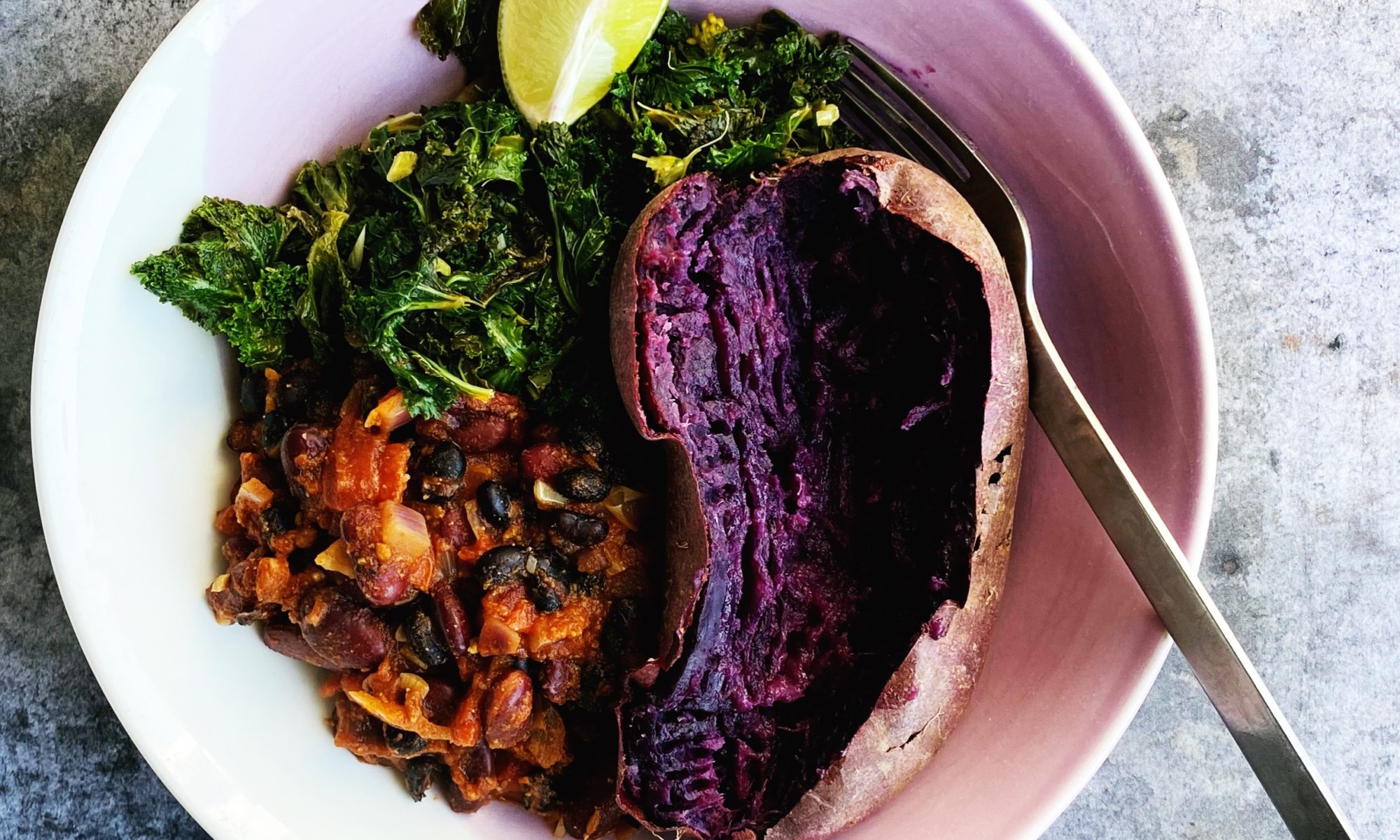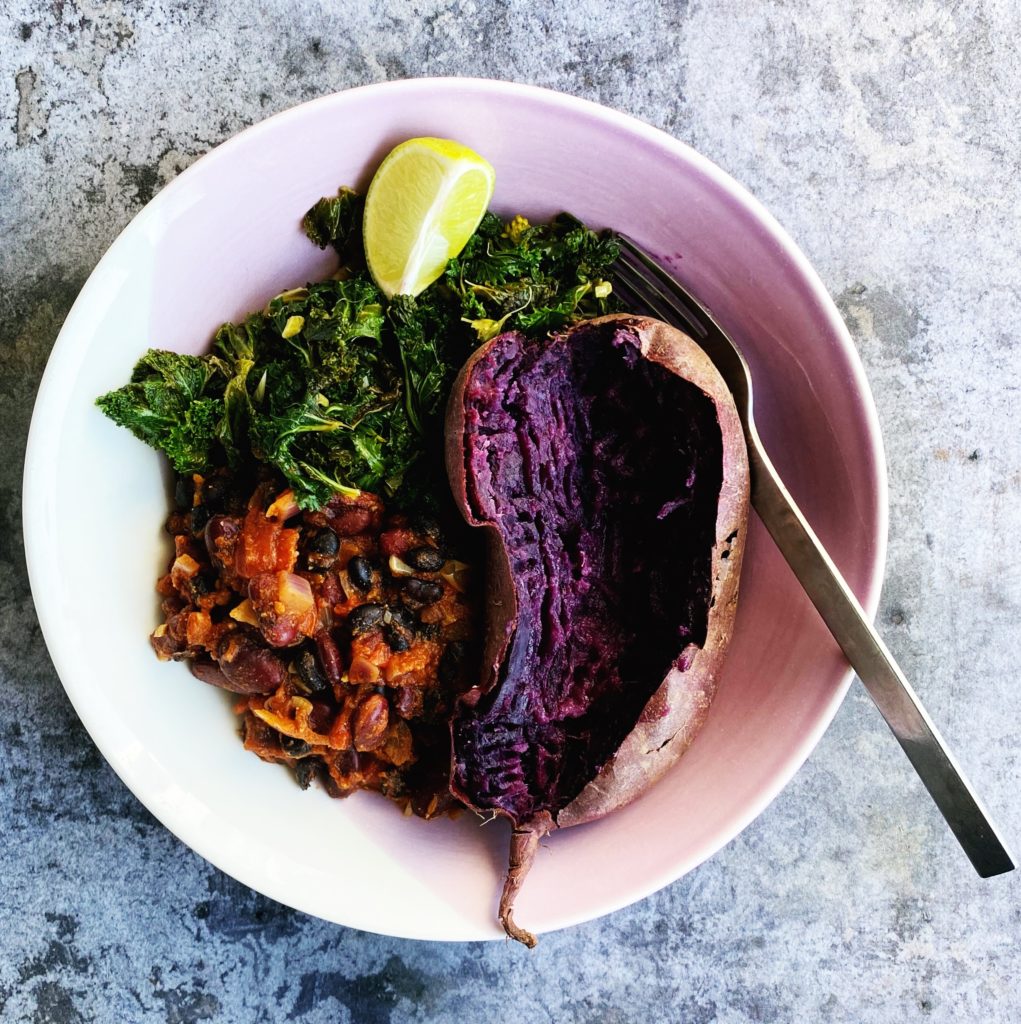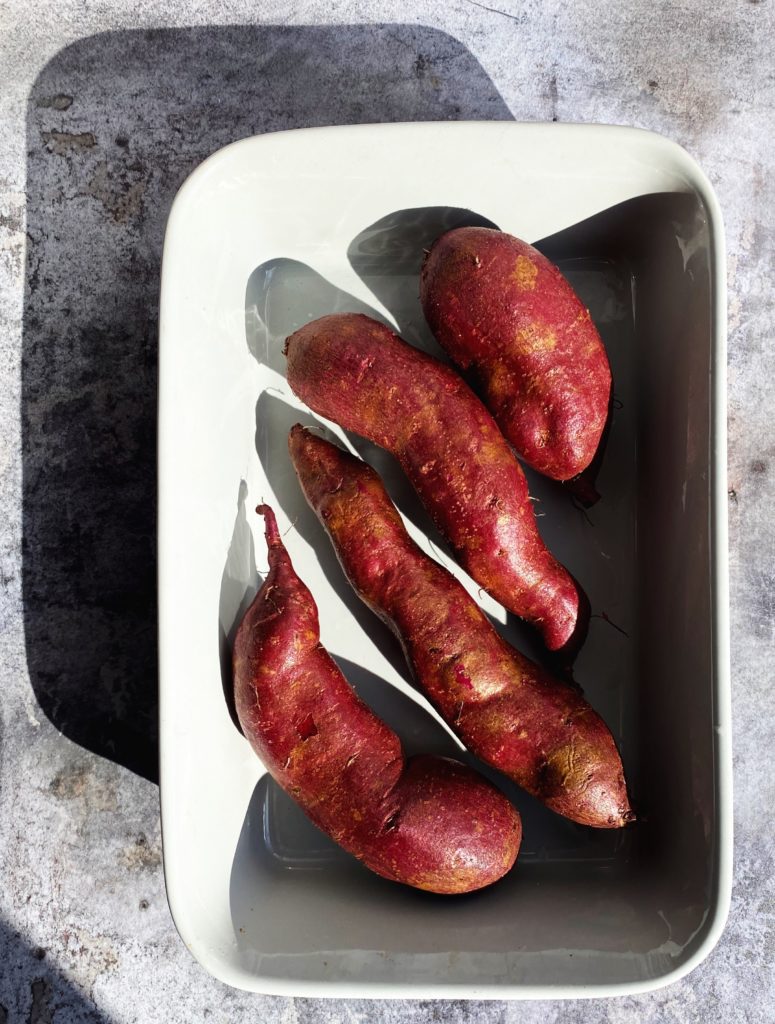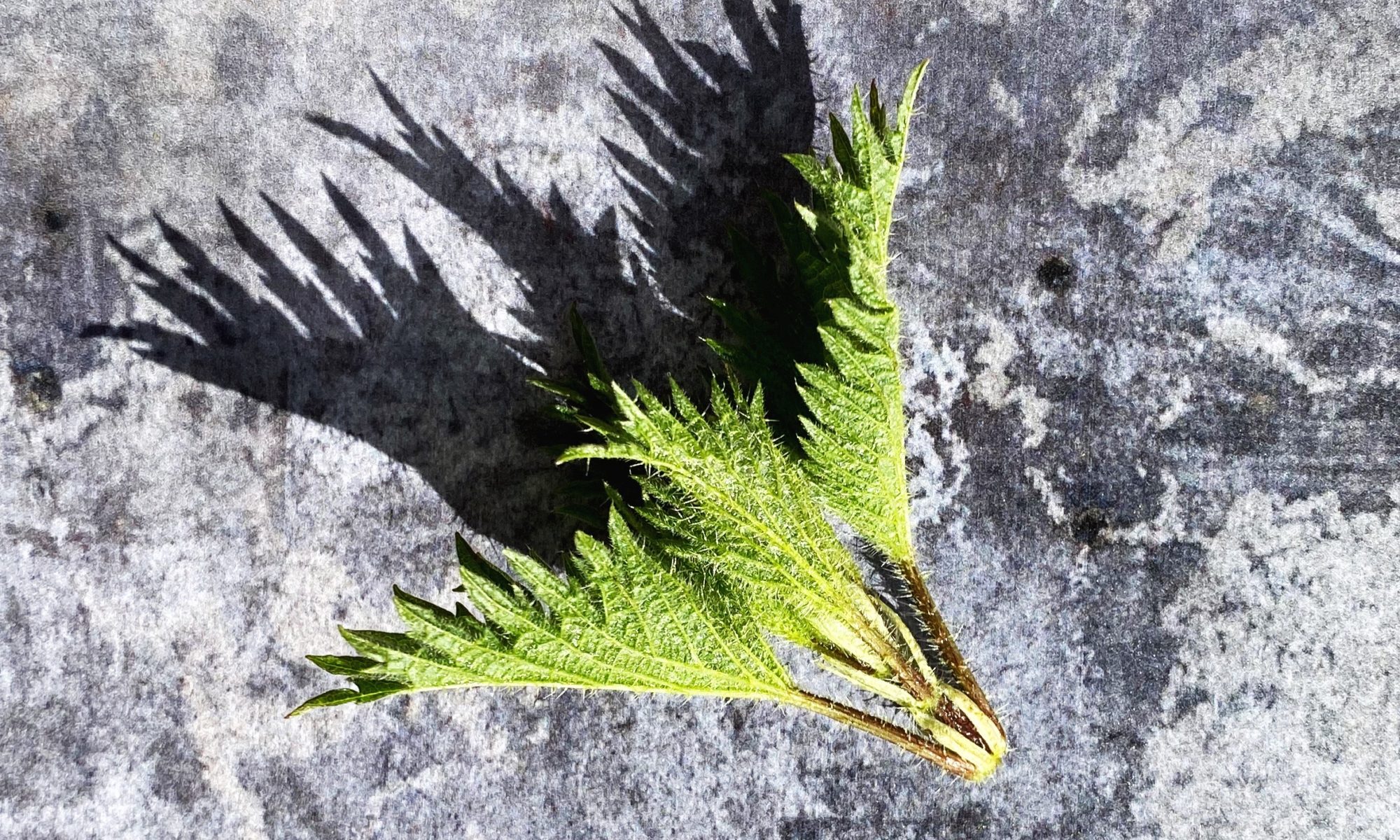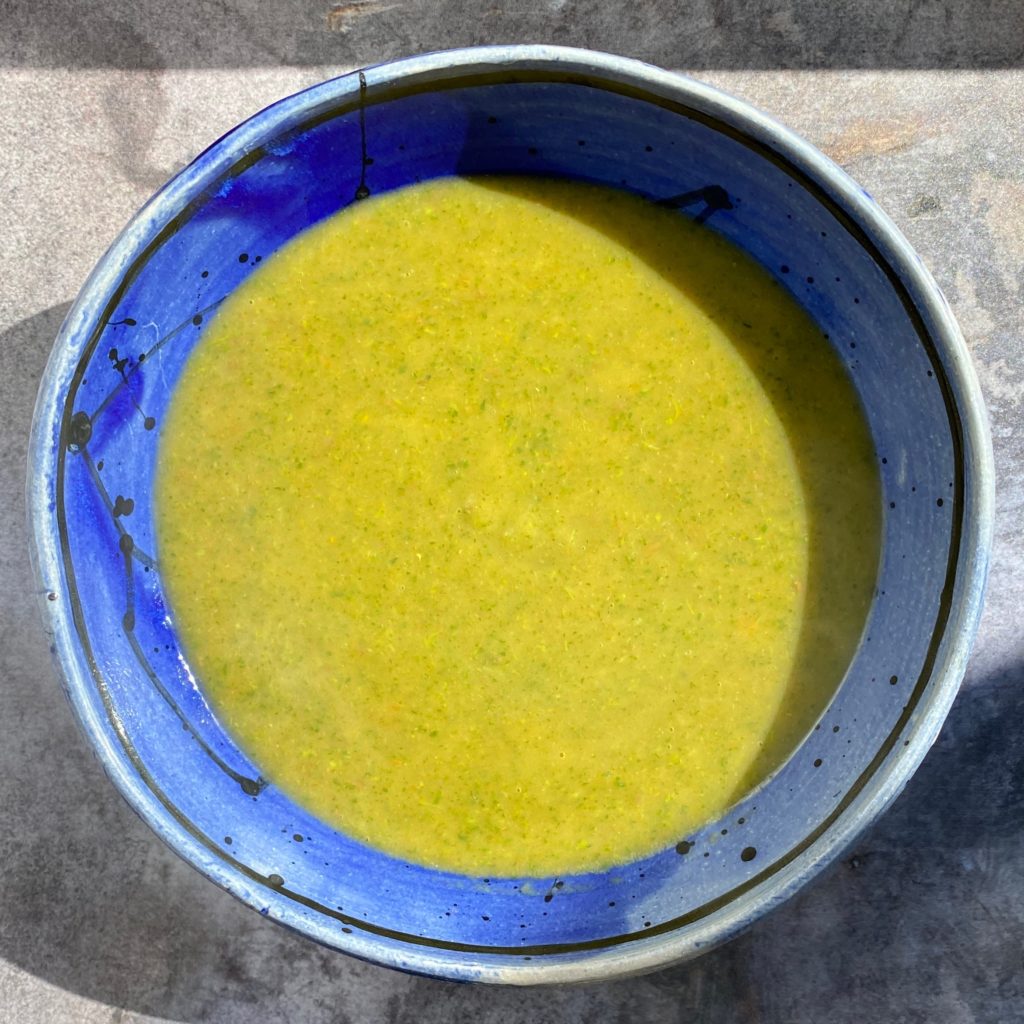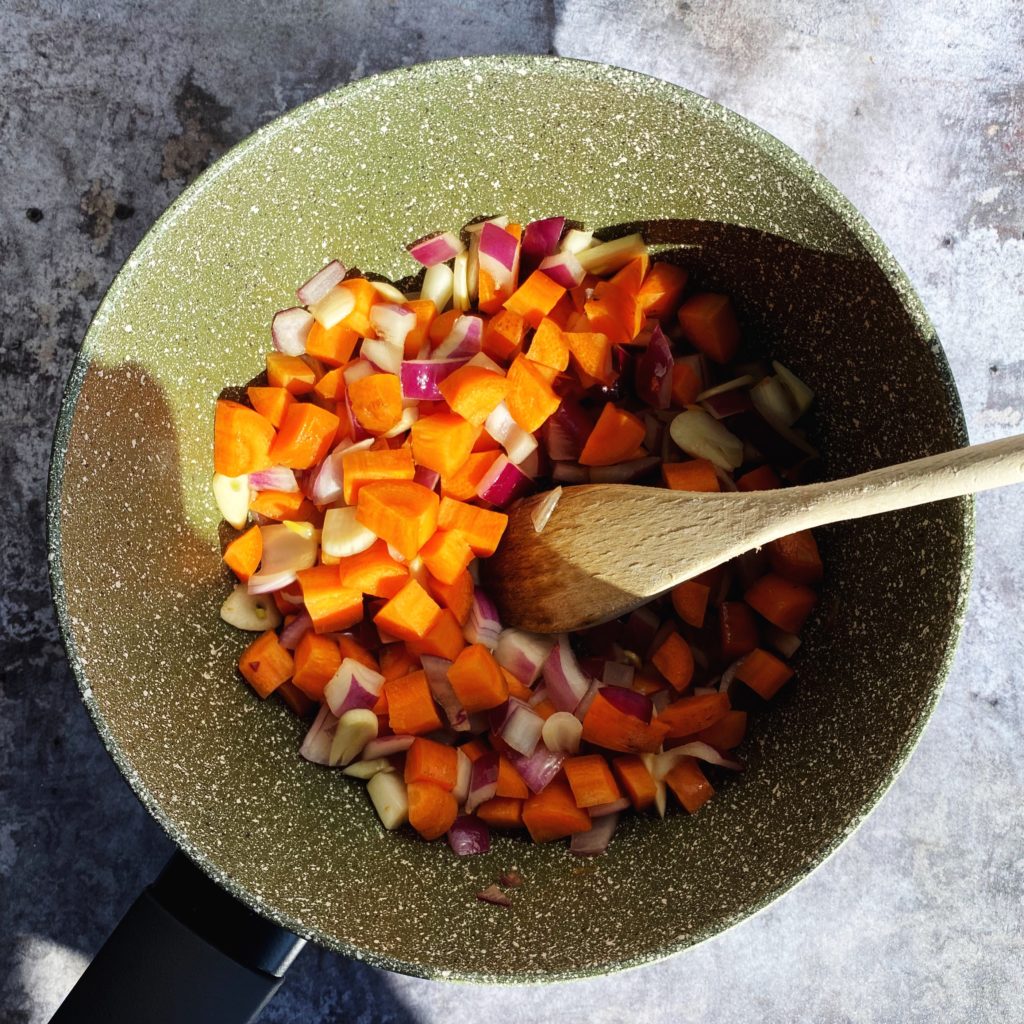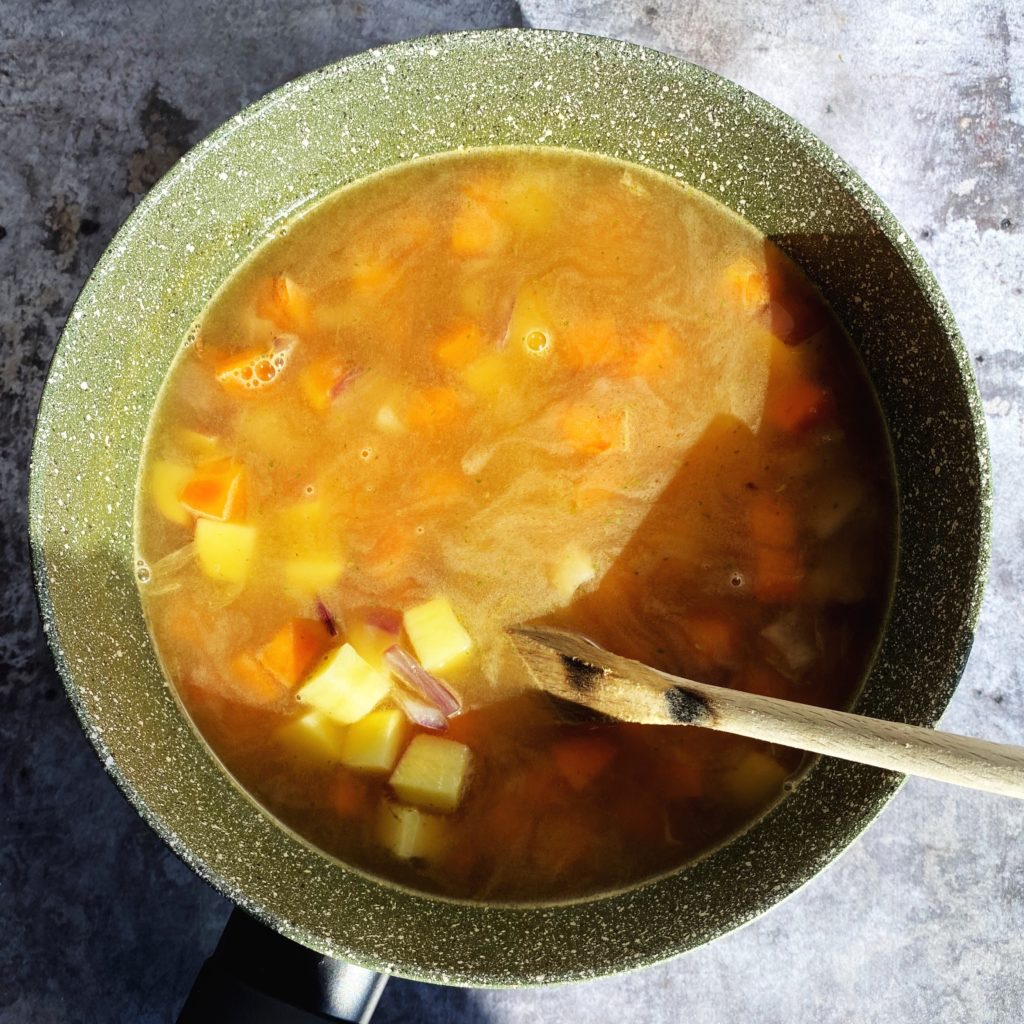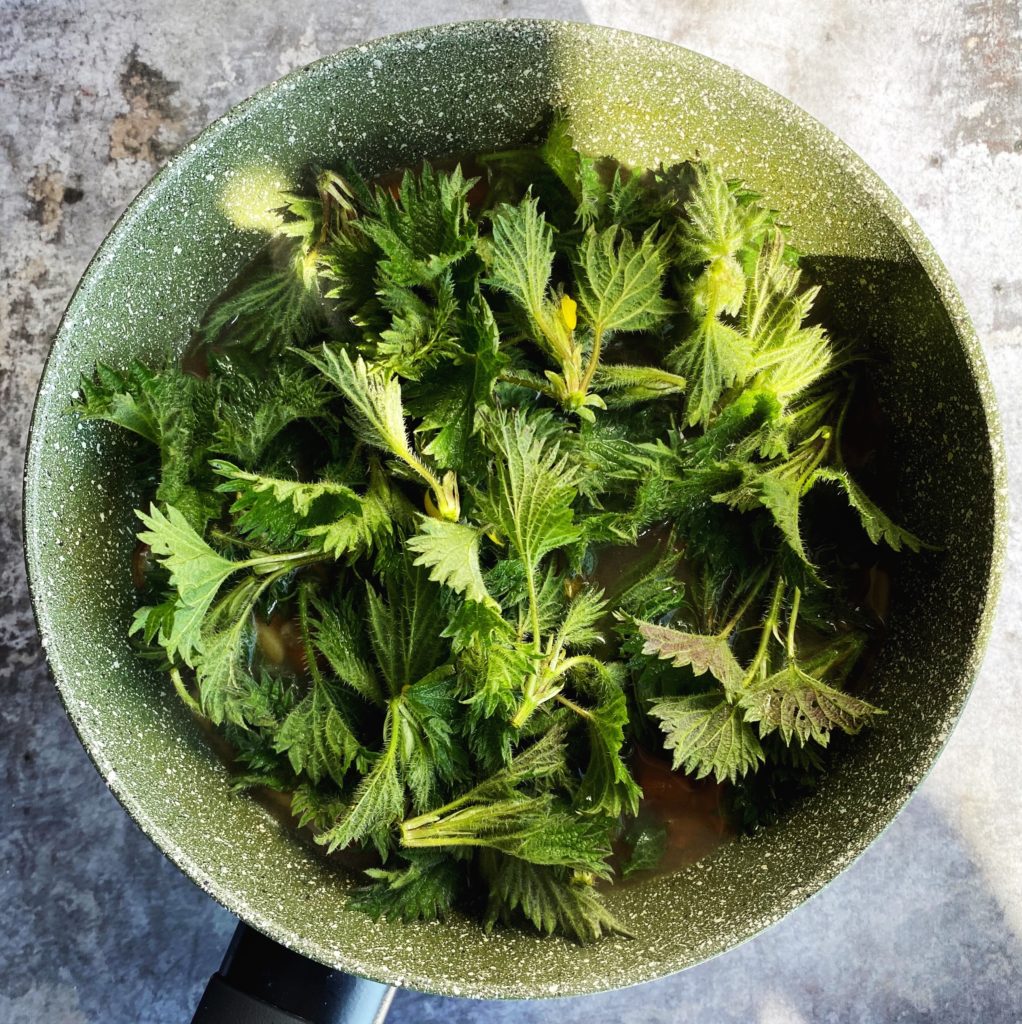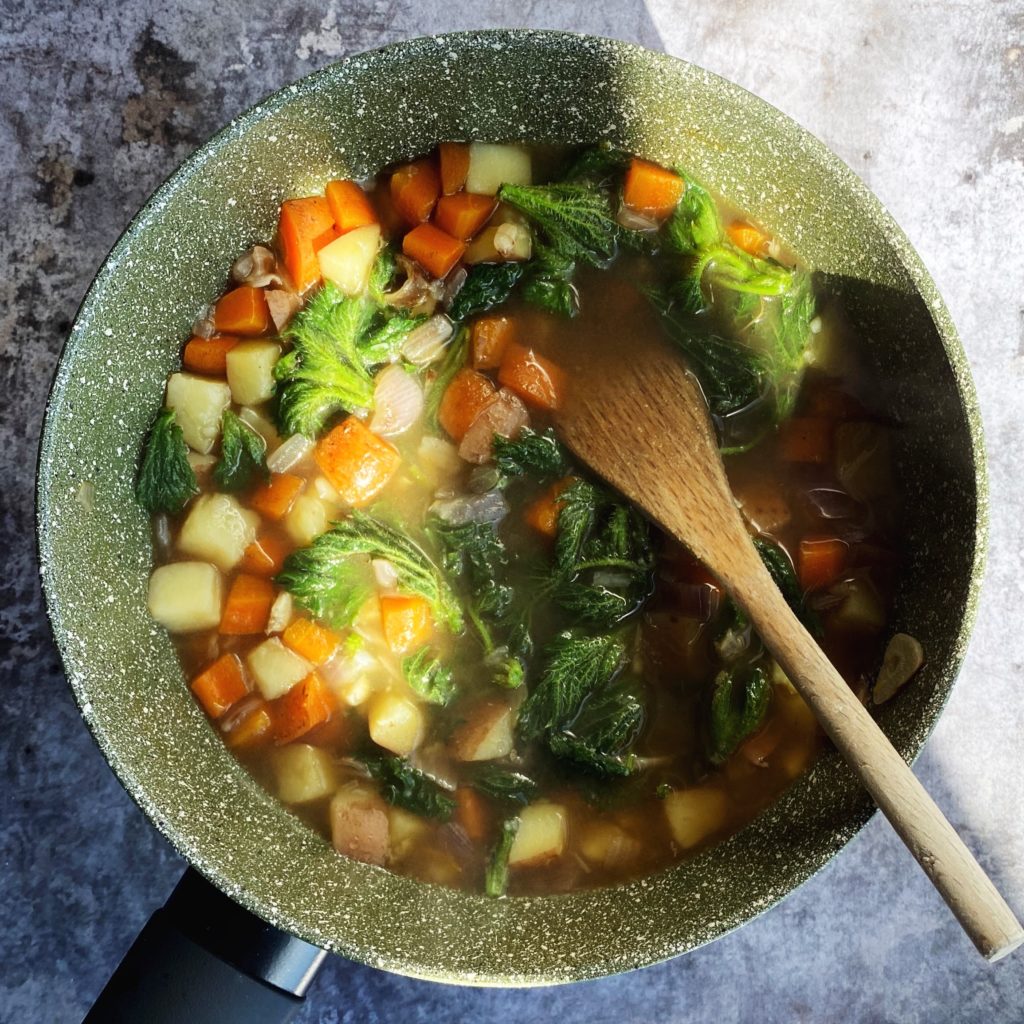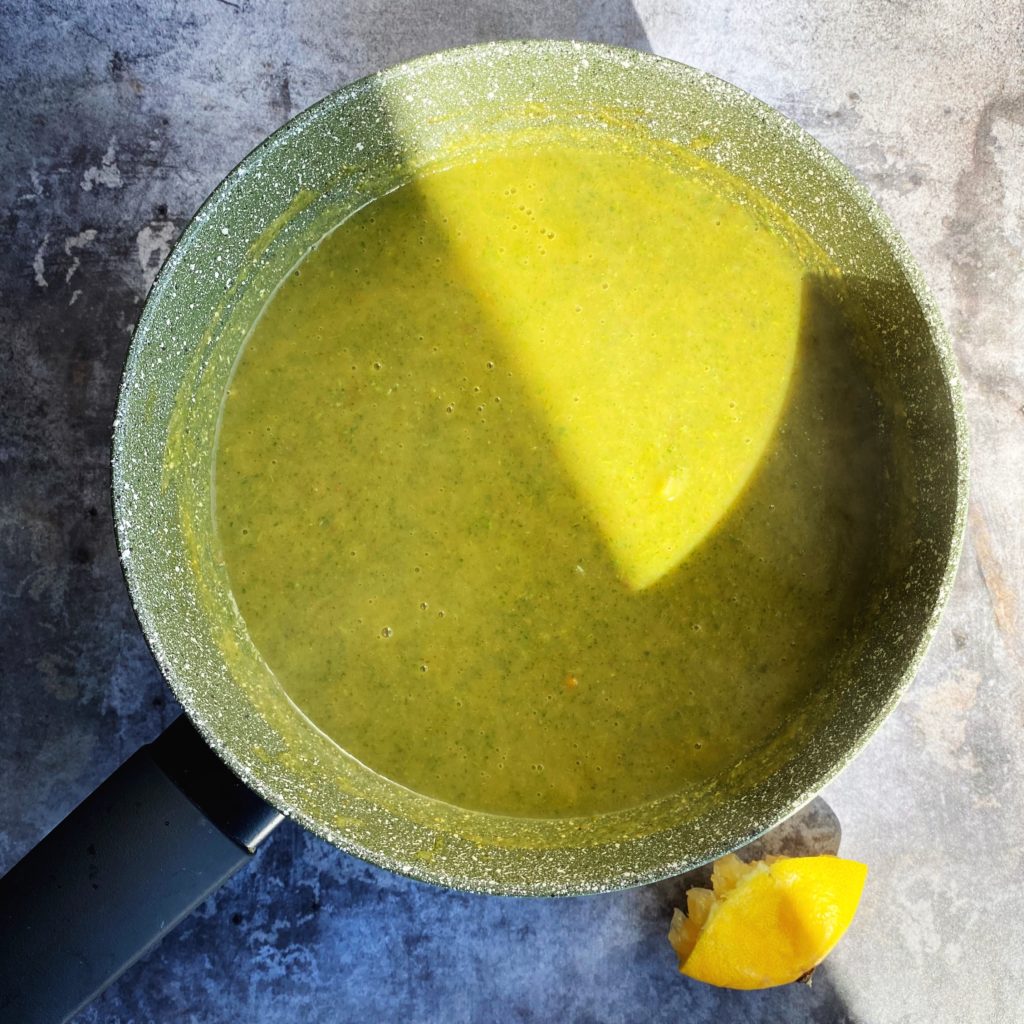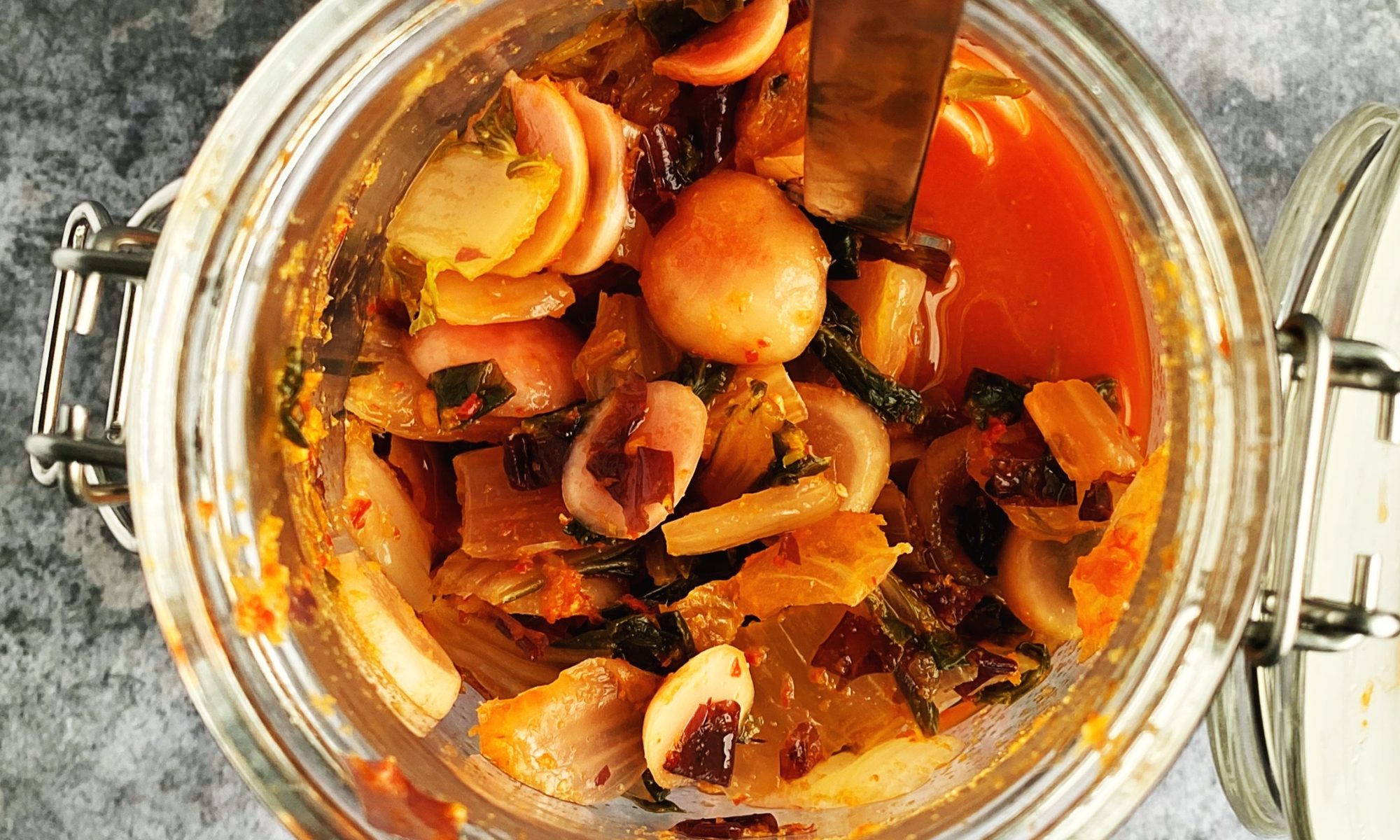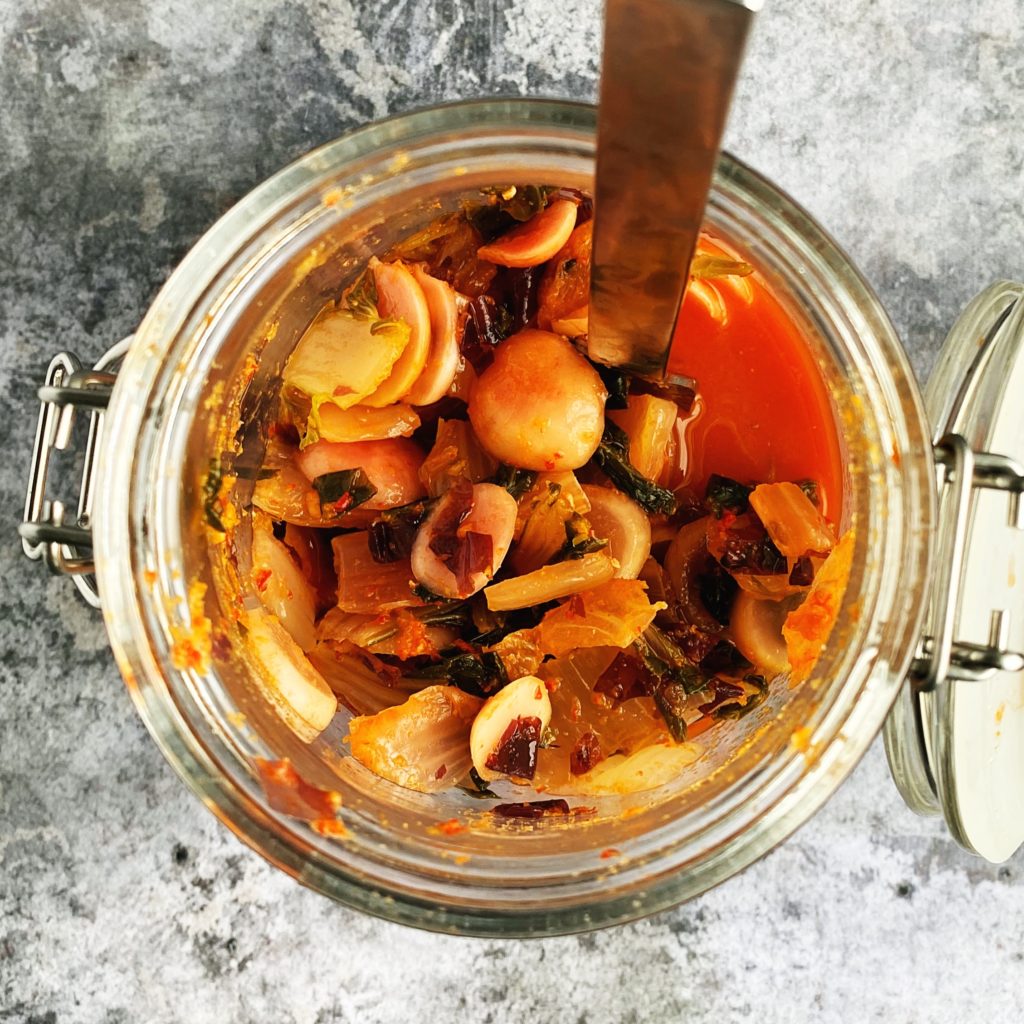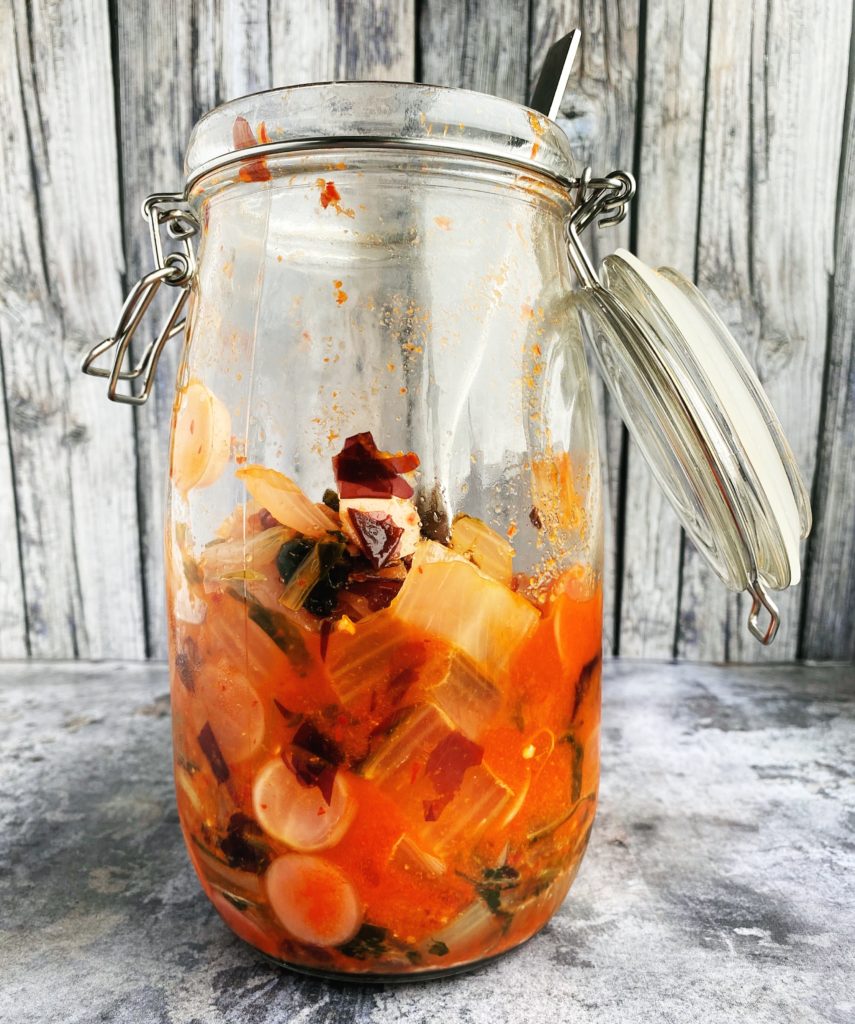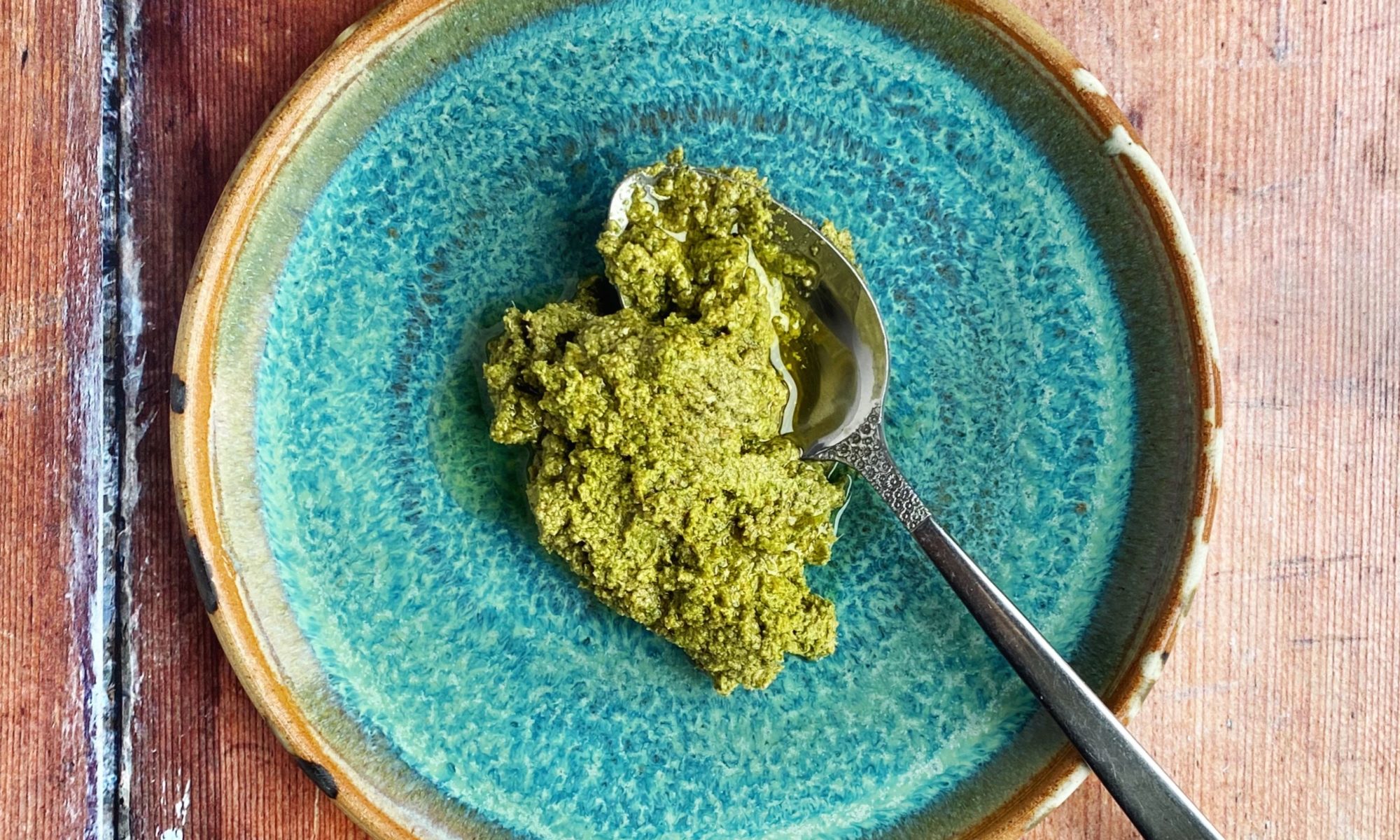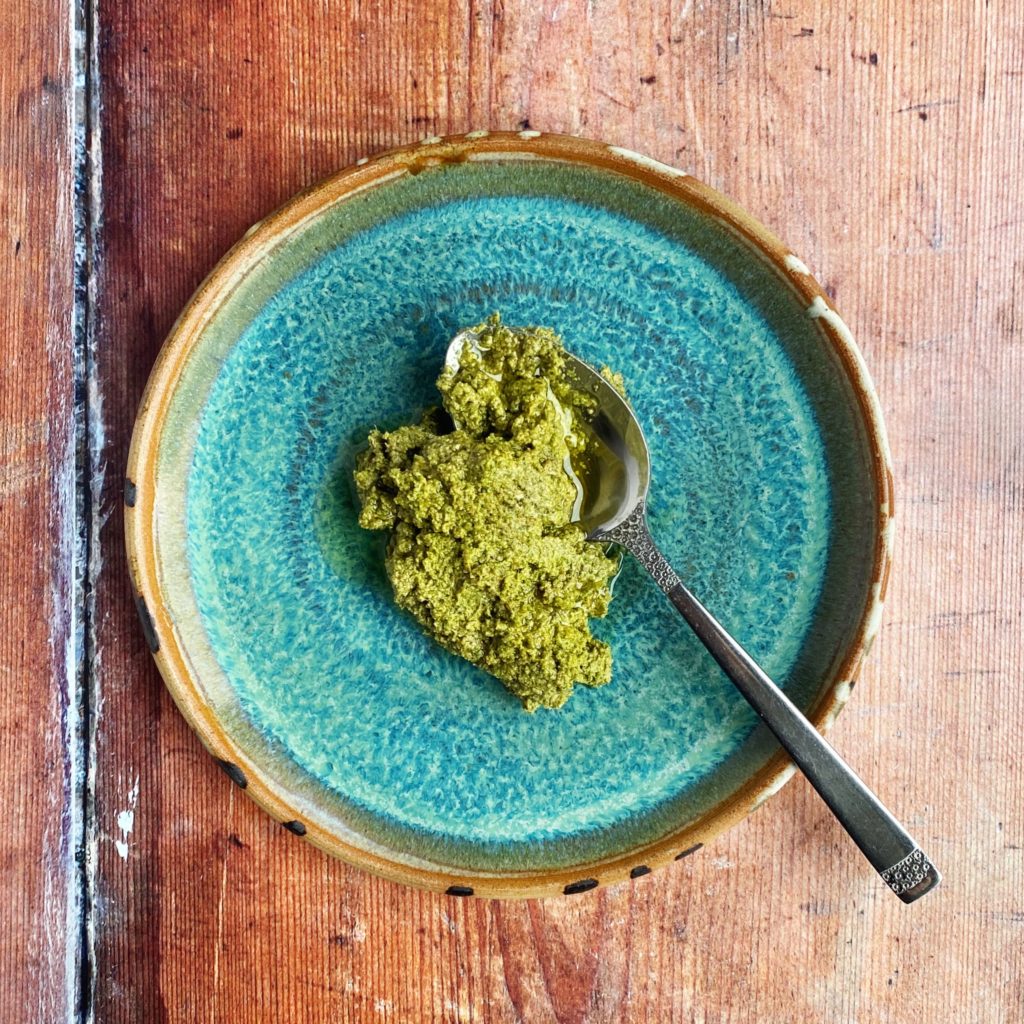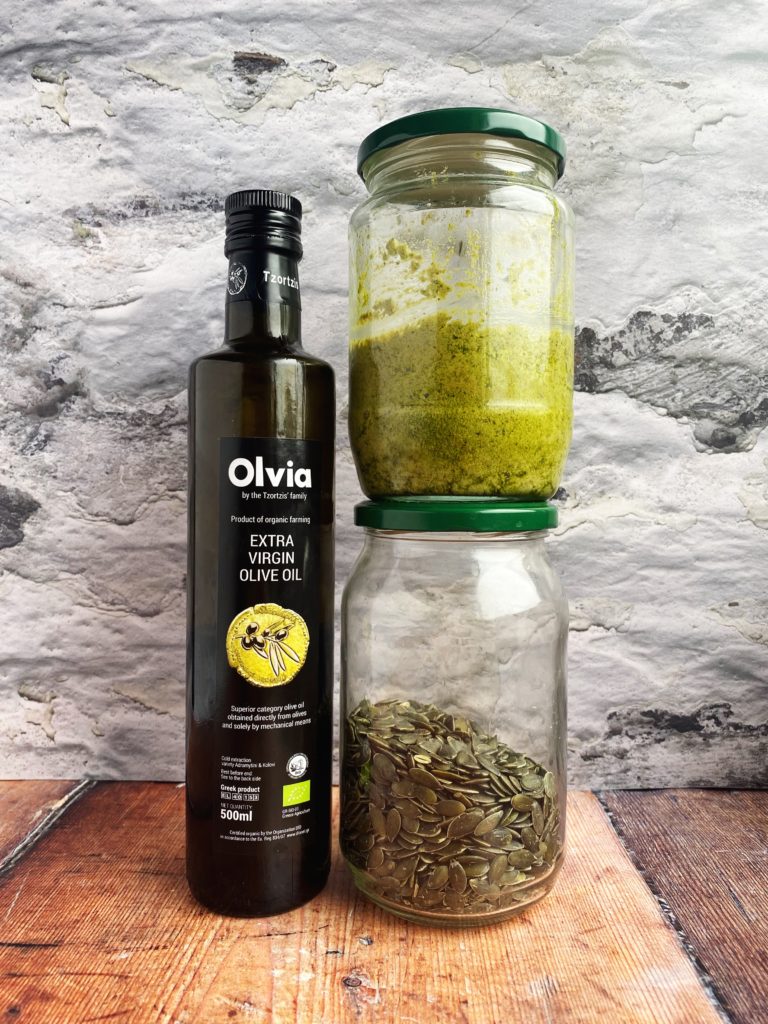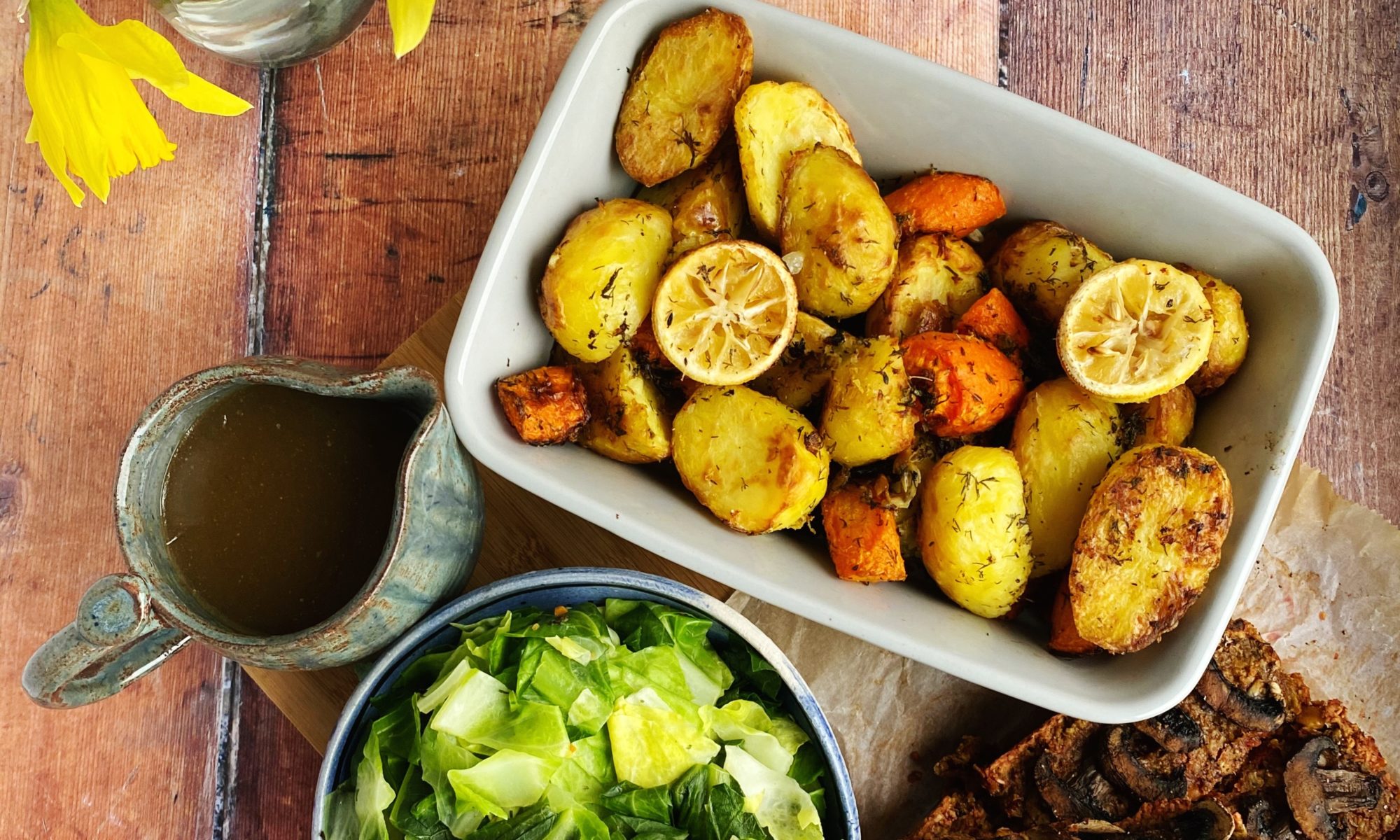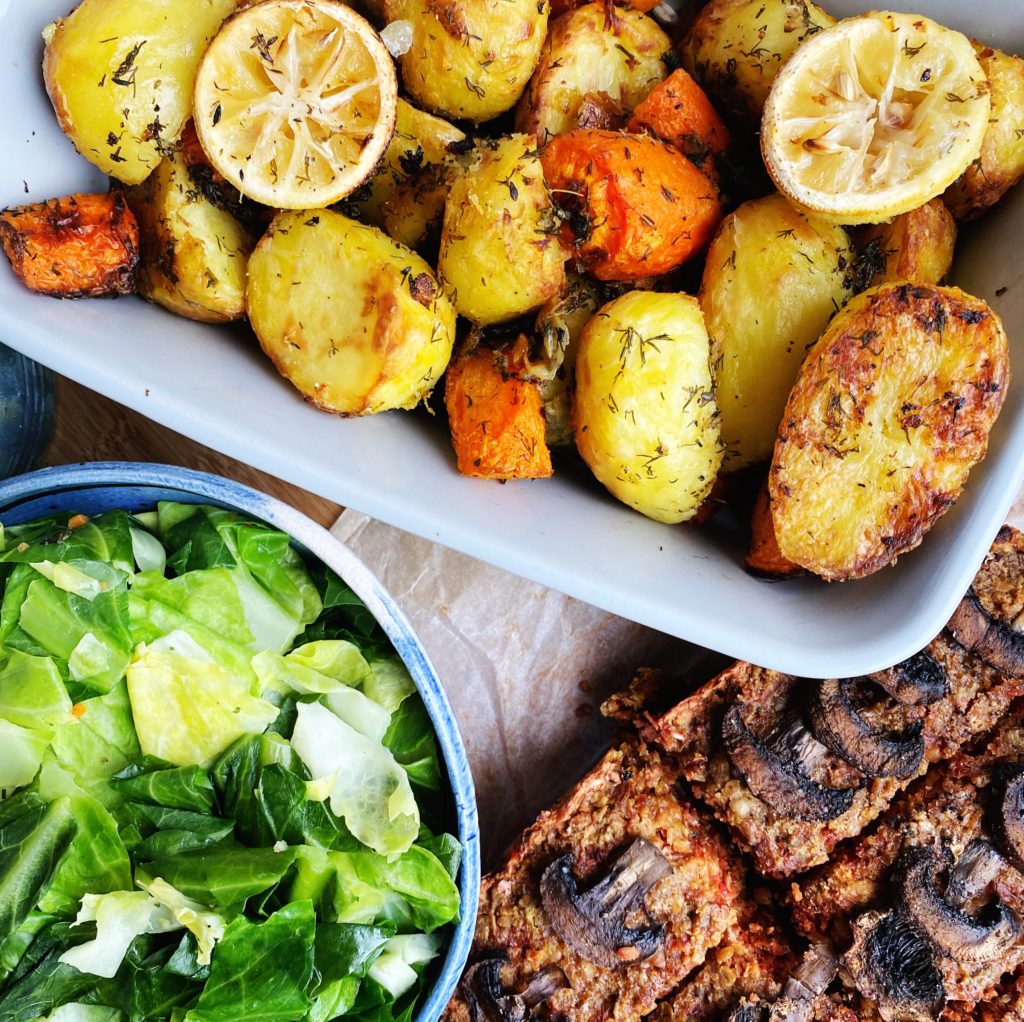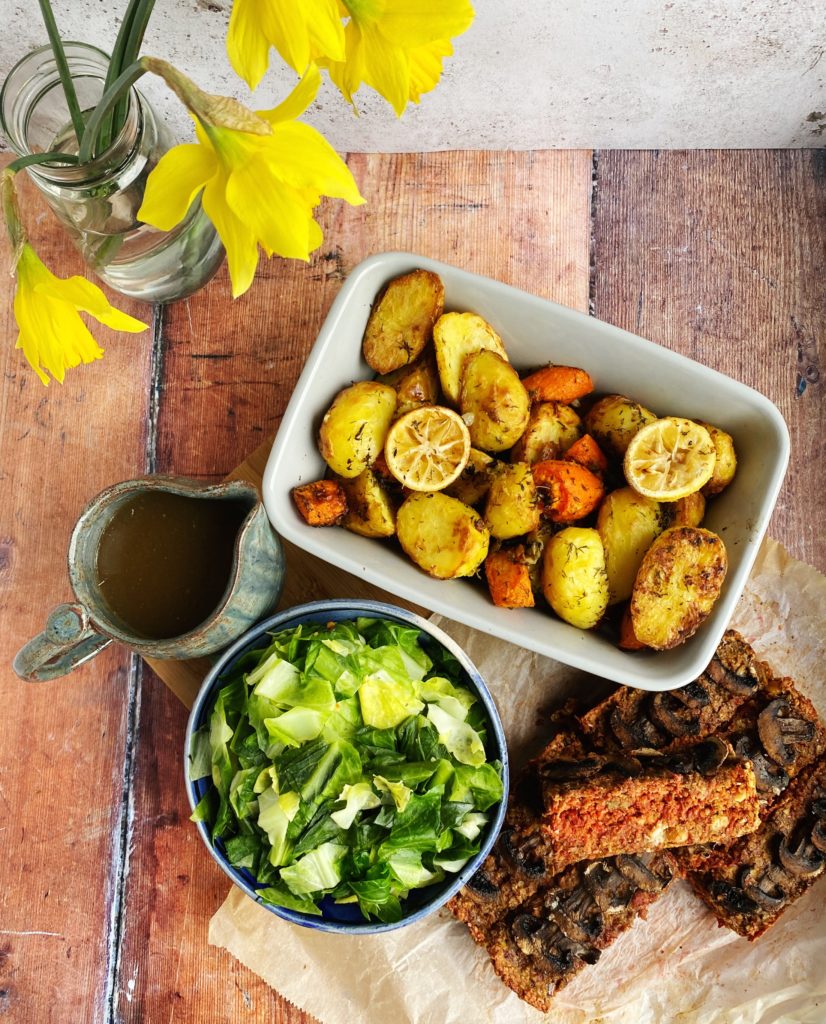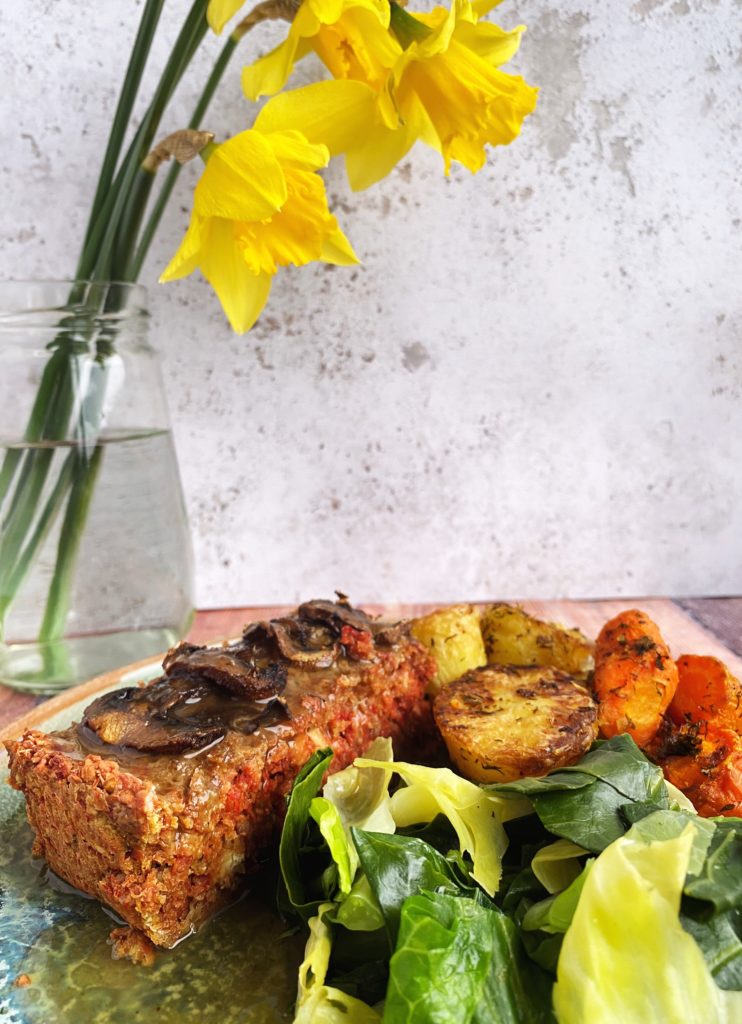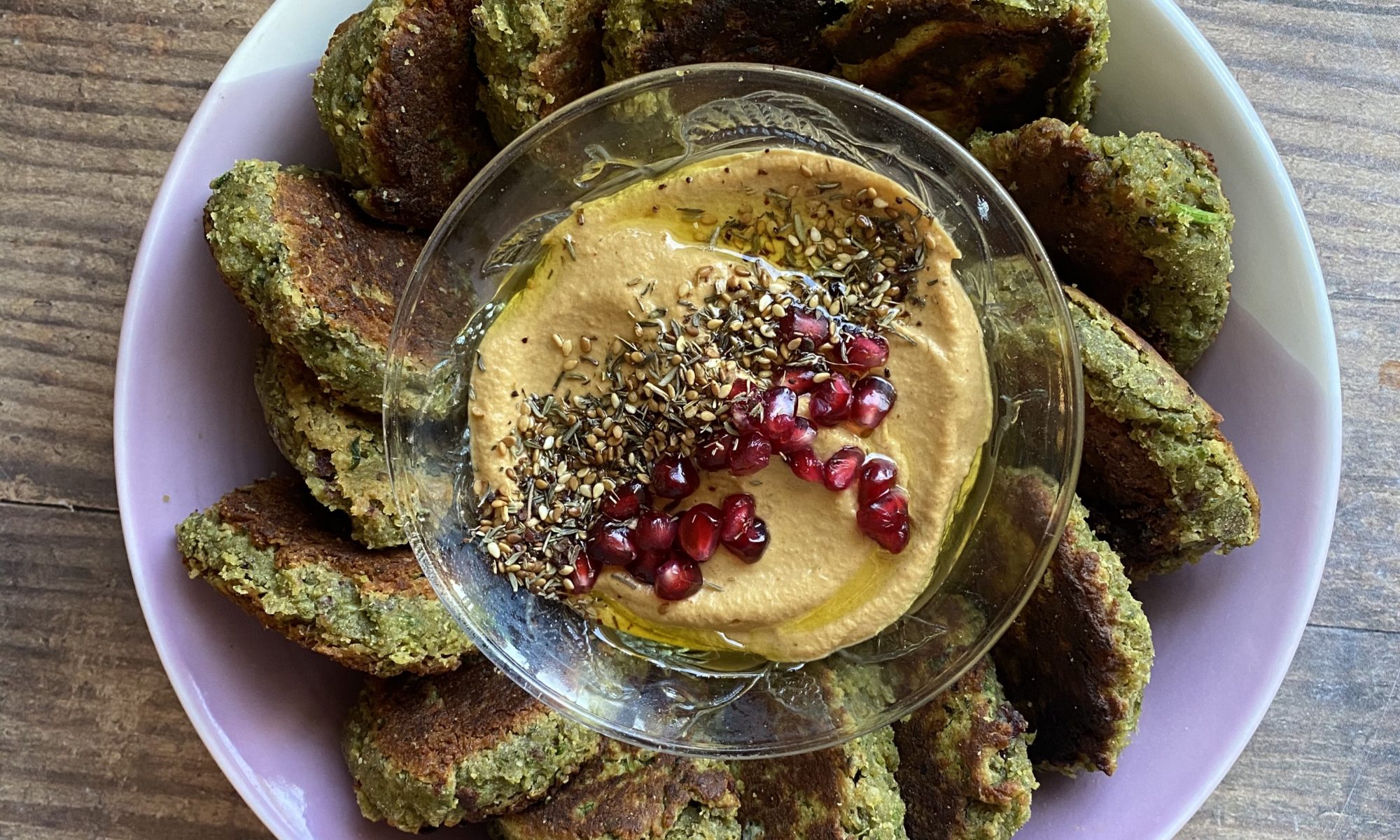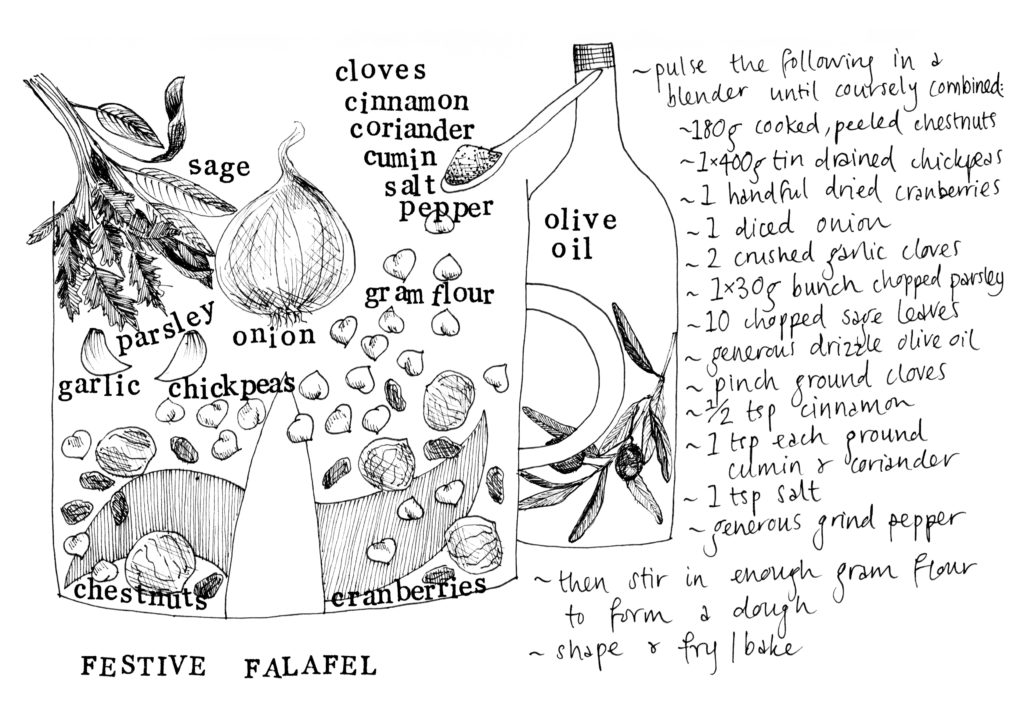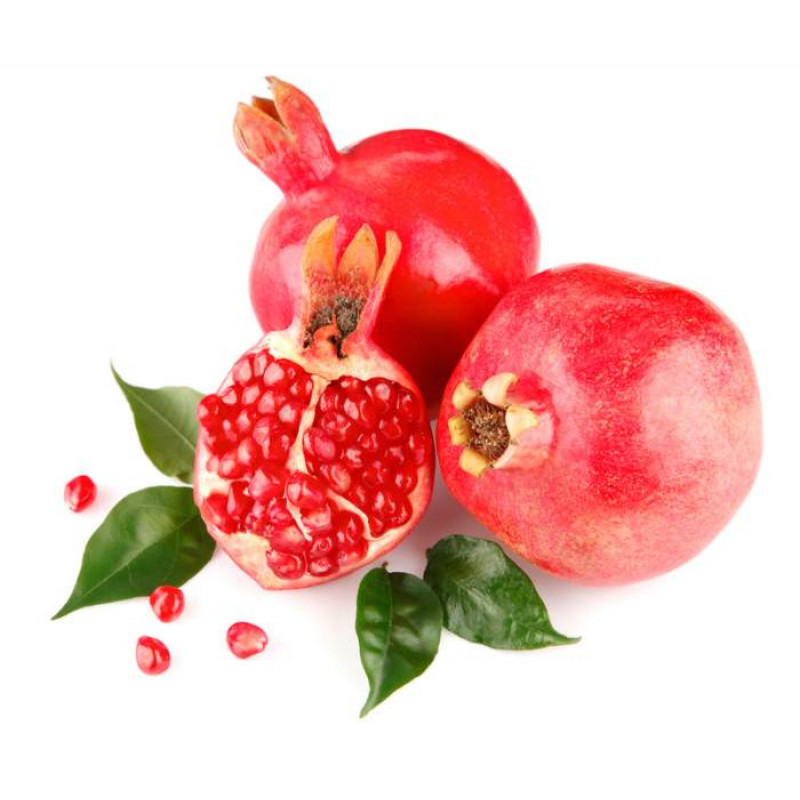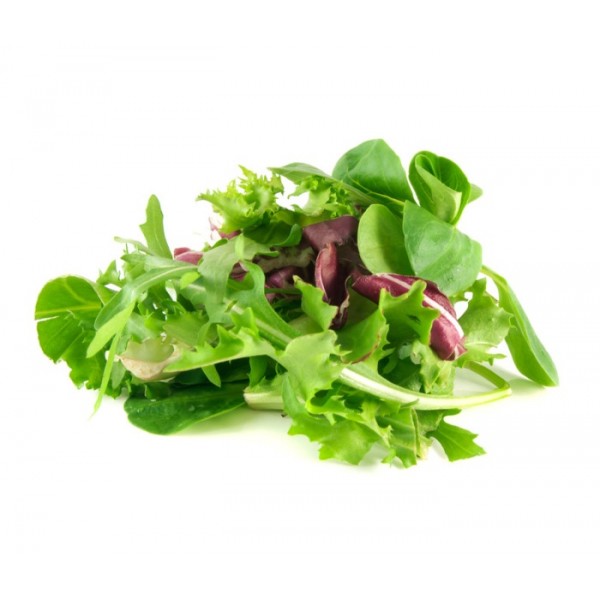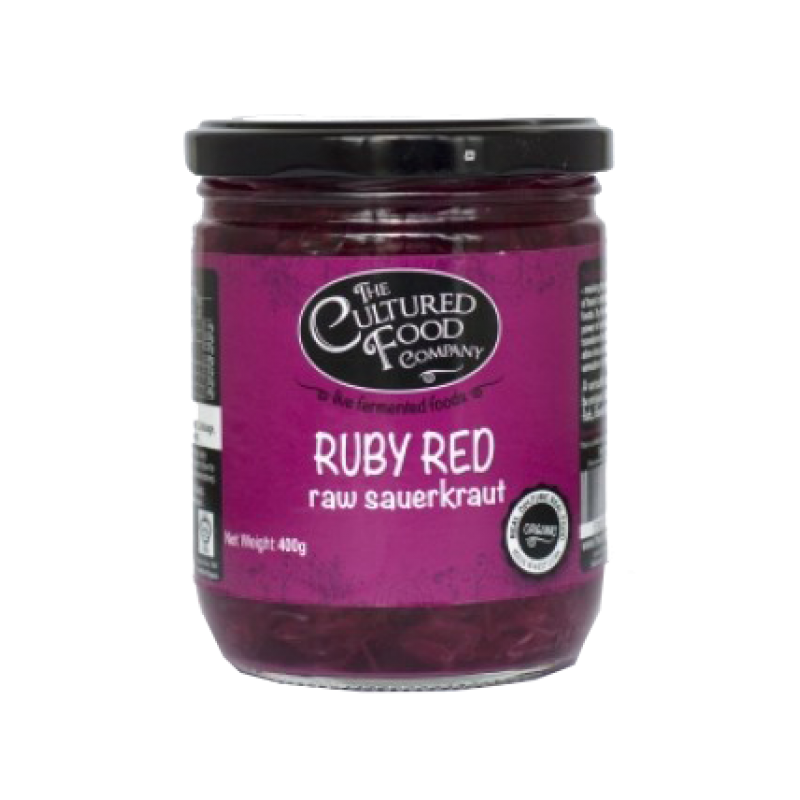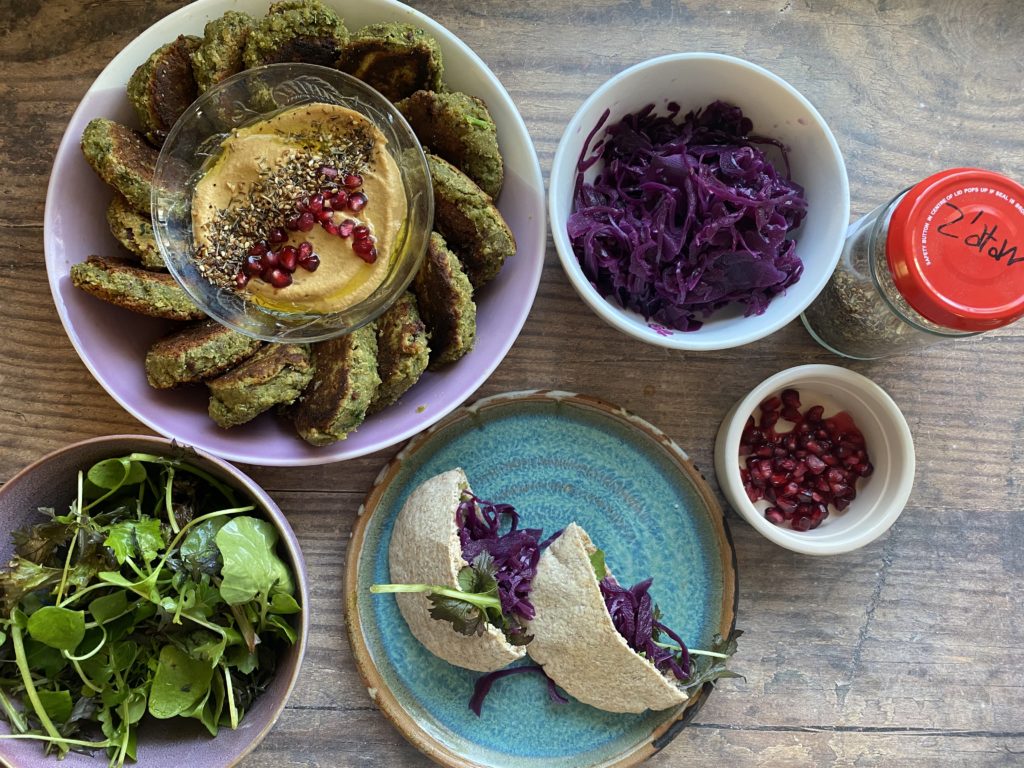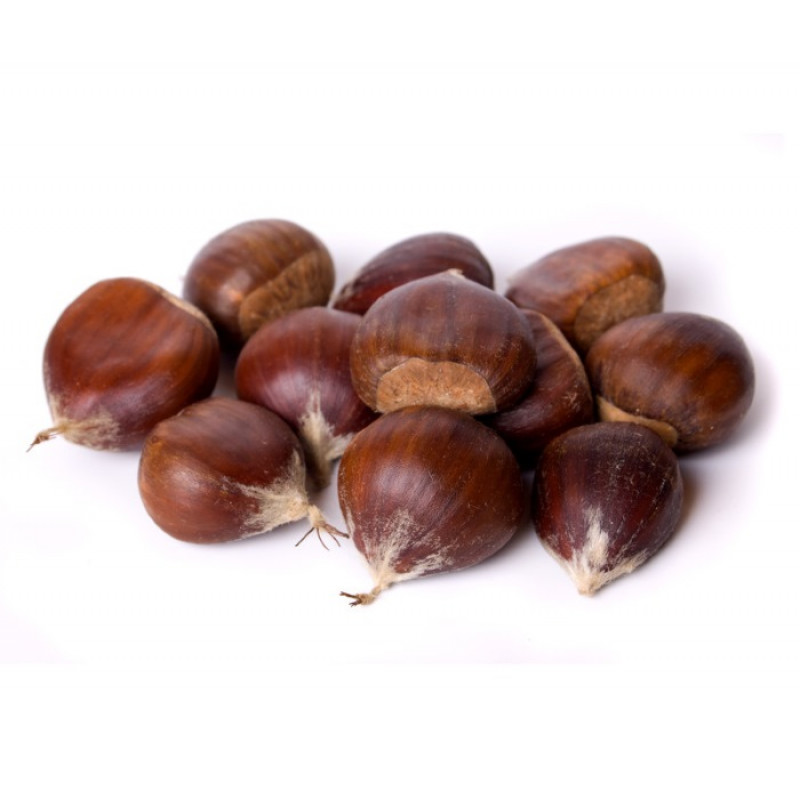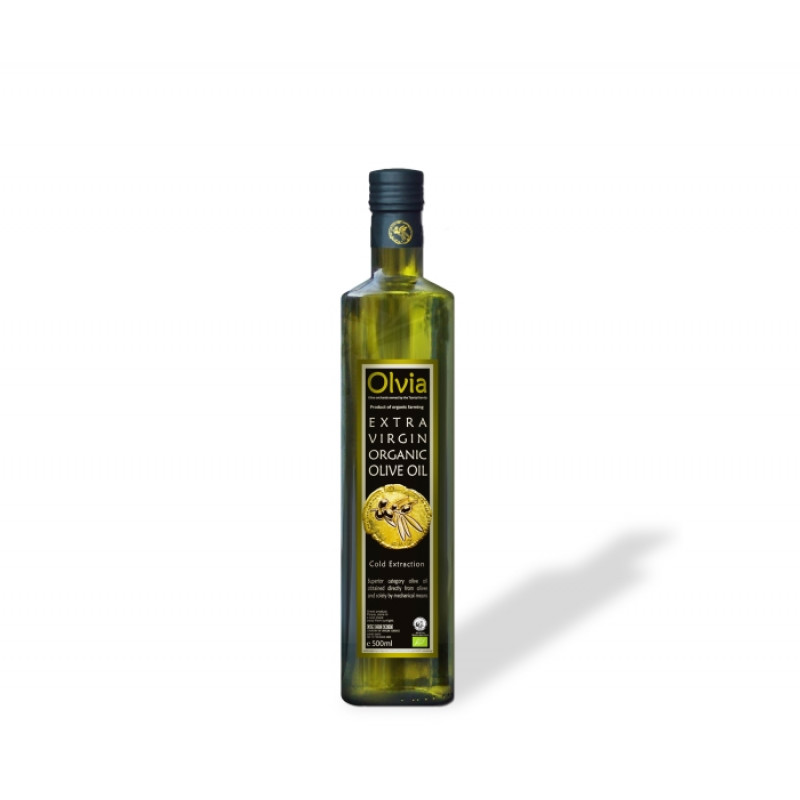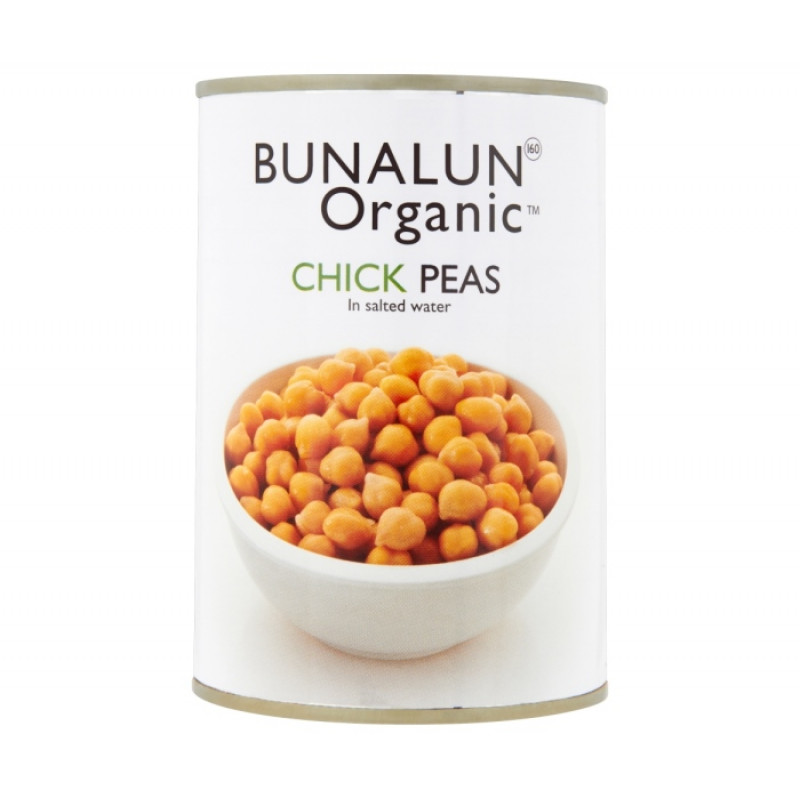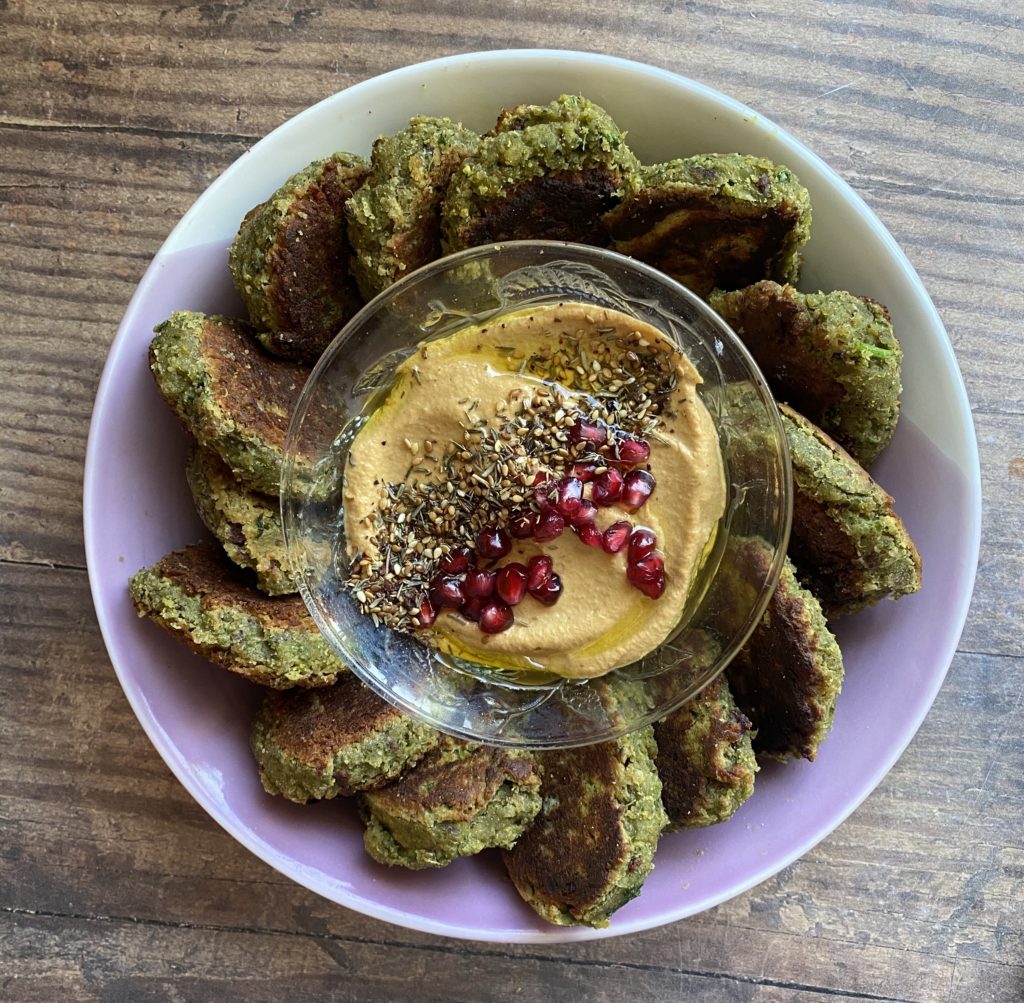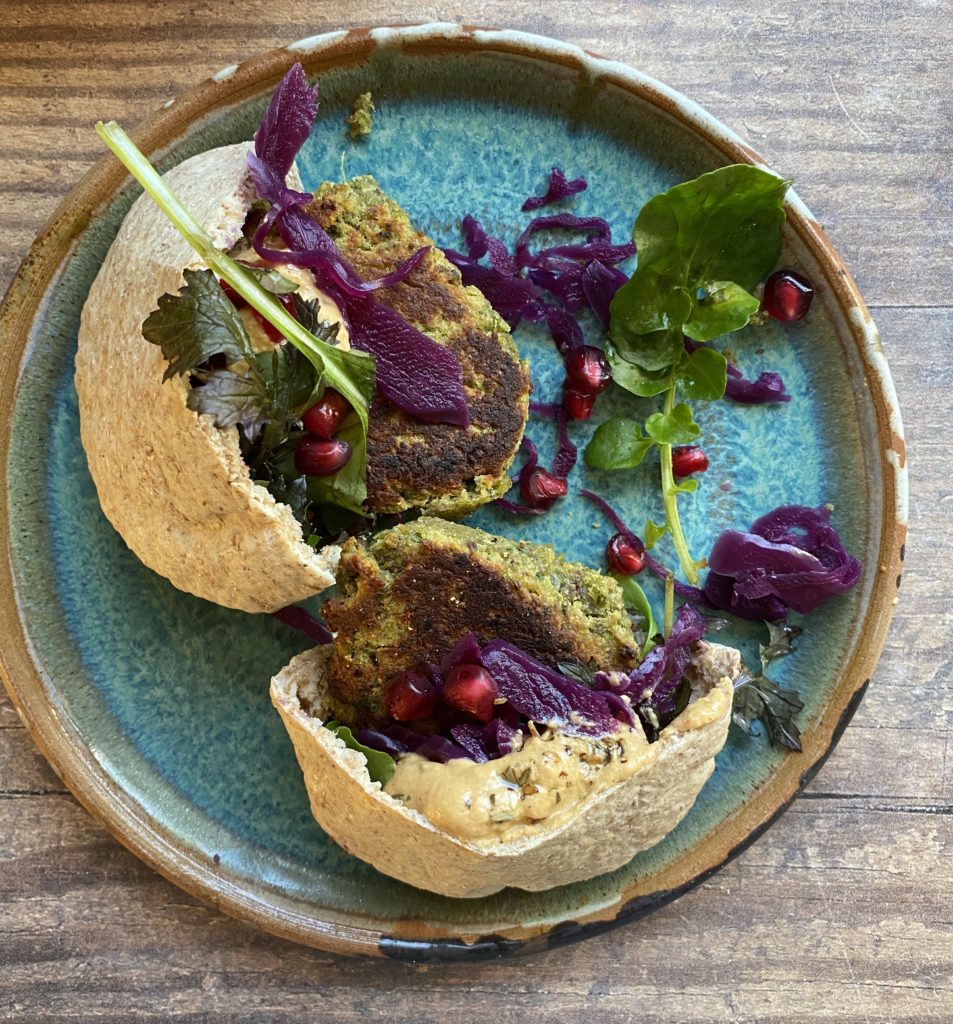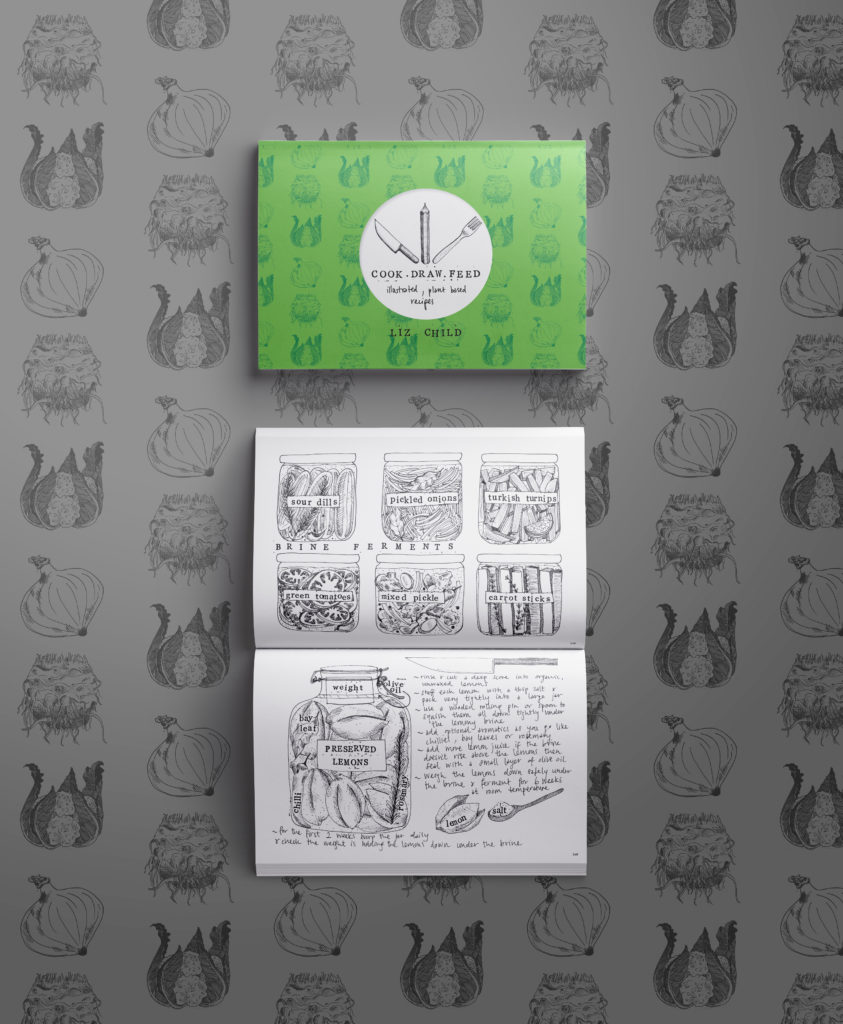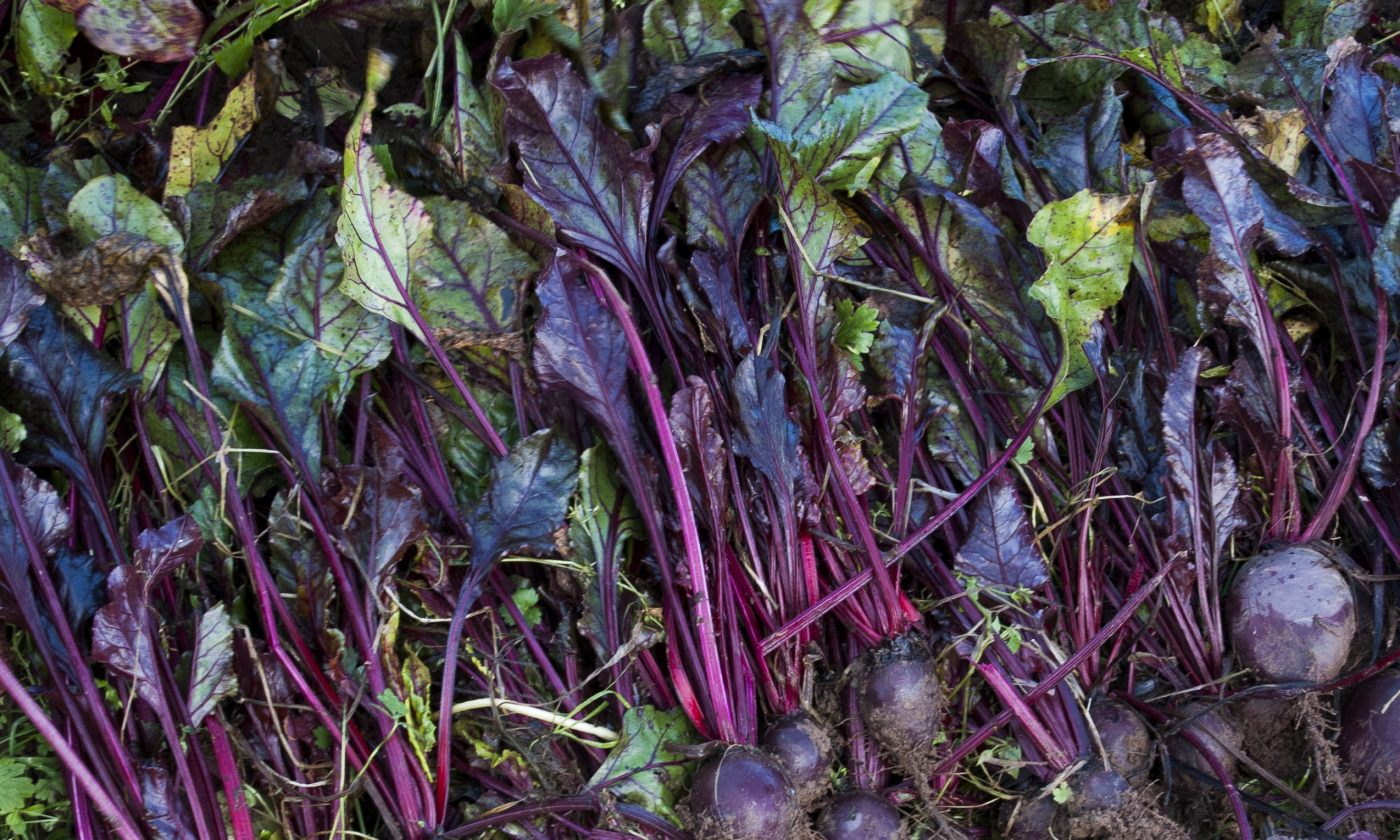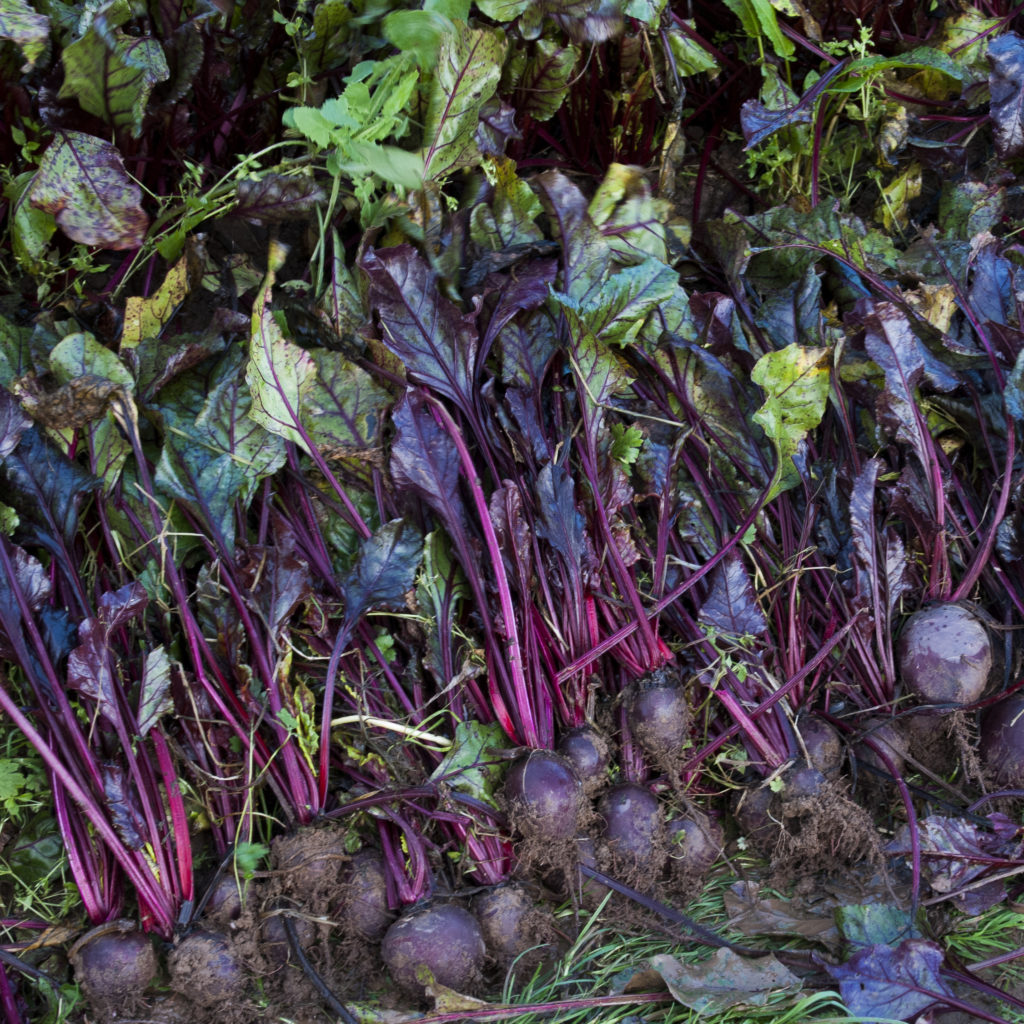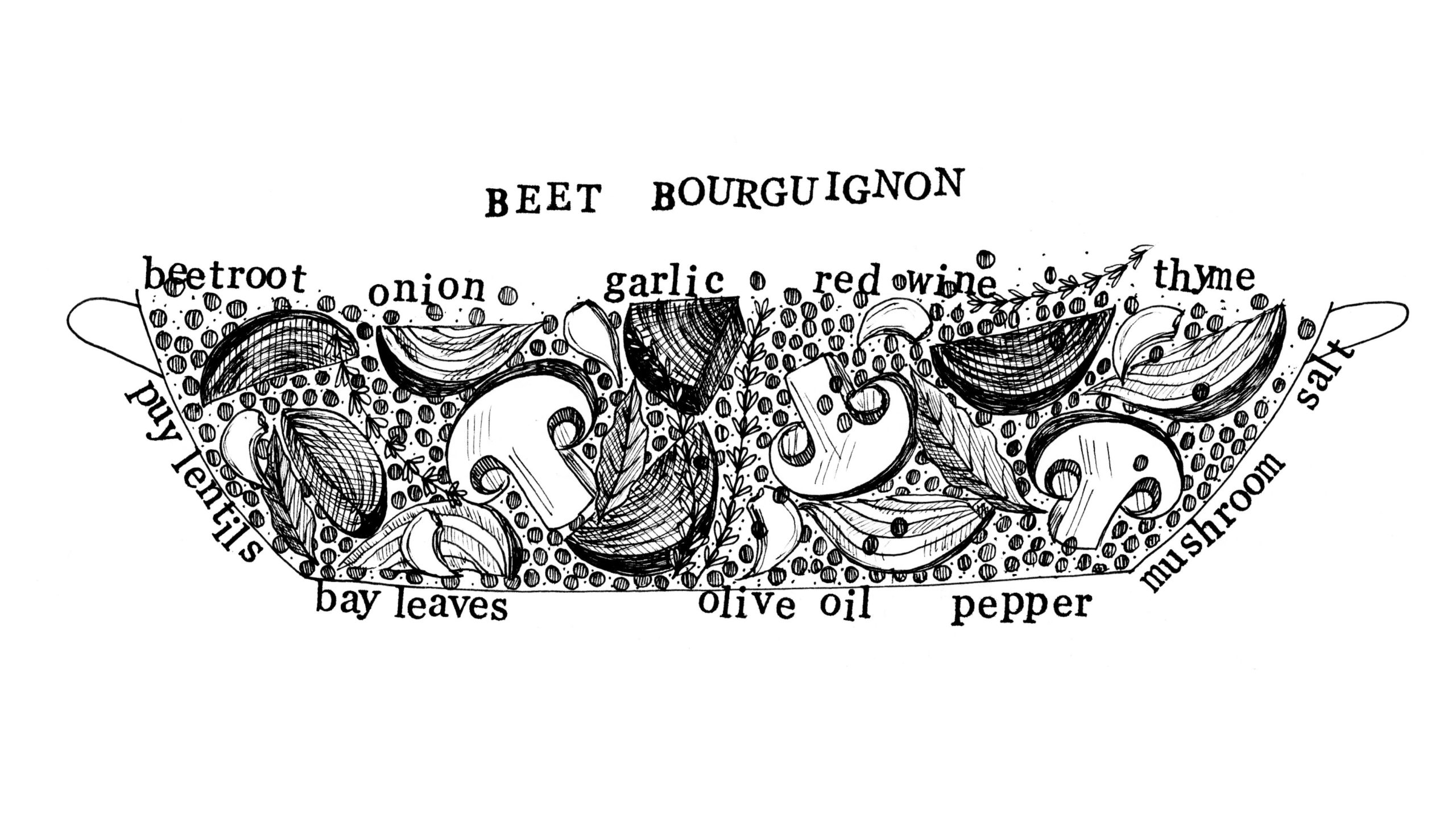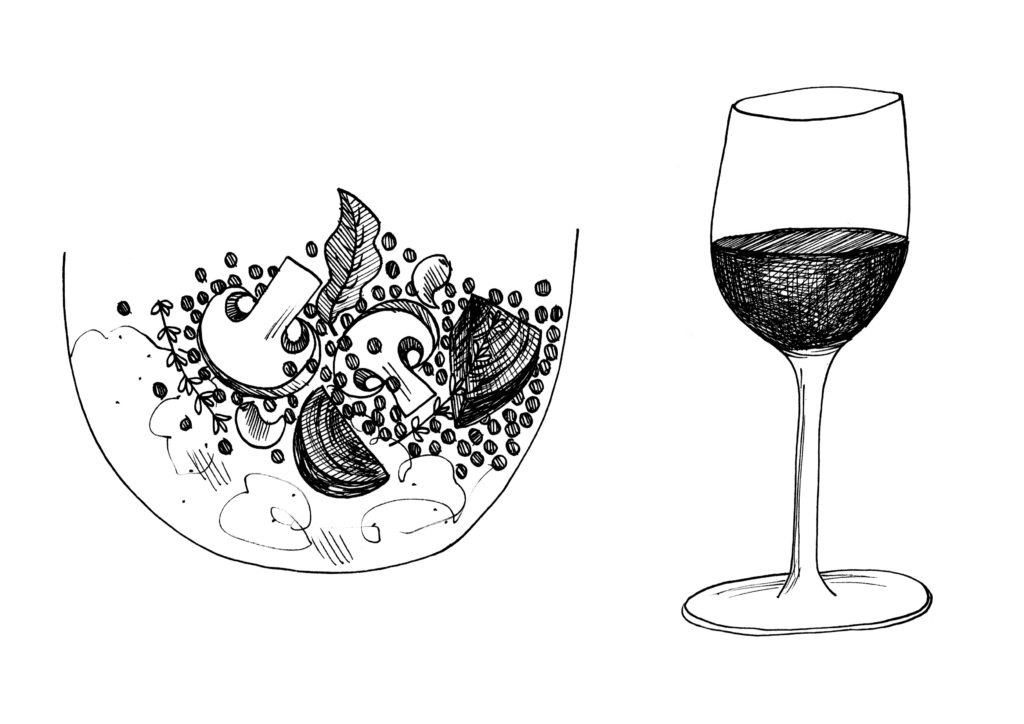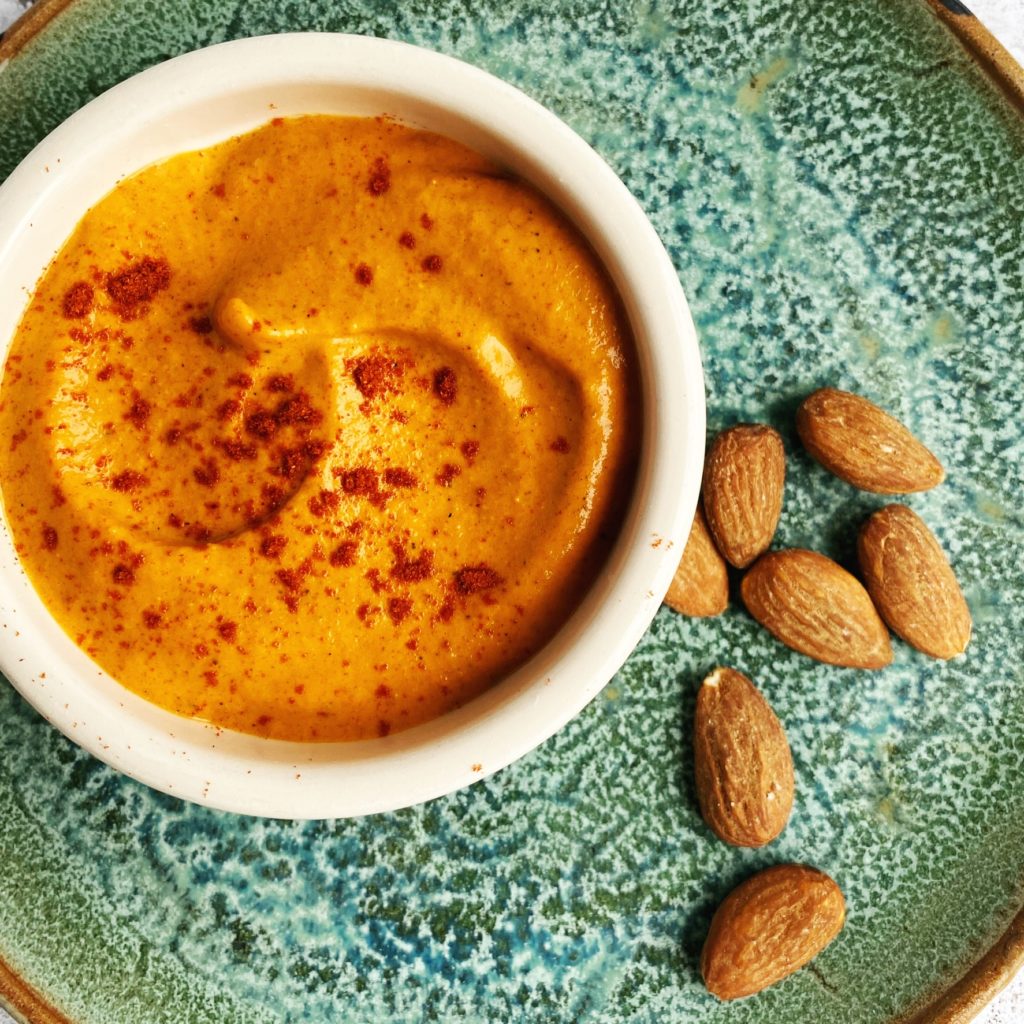
This romesco sauce is THE MOST delicious accompaniment to barbecued vegetables, it is our take on the special sauce used during calçot festivals in Catalonia (where barbecued large leek/scallion-like vegetables are dunked in romesco in their thousands). We make it on repeat all summer! It’s silky, nutty, savoury, sweet and smokey. Dunk freshly grilled vegetables or bread in it or even use it as a stunning pasta sauce. Spread it into wraps or sandwiches, smear it on a plate and top with salads and grilled veg, or just eat it with a spoon! You’ll fall for this sauce hard so let us know your favourite way to eat it.
There are as many traditional recipes as there are cooks in Catalonia and if you’re a fan of romesco you may notice bread, hazelnuts and tomatoes are missing from this one. Of course you should feel free to add them back in, but I love the undiluted, smokey roasted pepper flavour of our recipe. Use roasted or barbecued red peppers and good olive oil, or for ease, one of our new jars of organic ready roasted peppers in oil. We also sell bulk bags of organic almonds (and hazelnuts) in compostable packaging. Sherry vinegar is traditional in this Catalonian recipe, but actually, we love using the raw, organic, Irish, apple cider vinegar from Clashganny Farm in Co. Waterford instead. It’s gorgeous stuff, why not add a bottle to your next order?
Liz x
Ingredients
- 1 190g jar of roasted peppers & the oil*
- *OR* 2 roasted/grilled red peppers & 4 tbsp olive oil
- 1 clove of raw garlic, peeled
- 1 tbsp smoked paprika
- 2 tbsp vinegar (sherry or apple cider)
- 1 handful of roasted almonds (about 50g)
- a pinch of salt
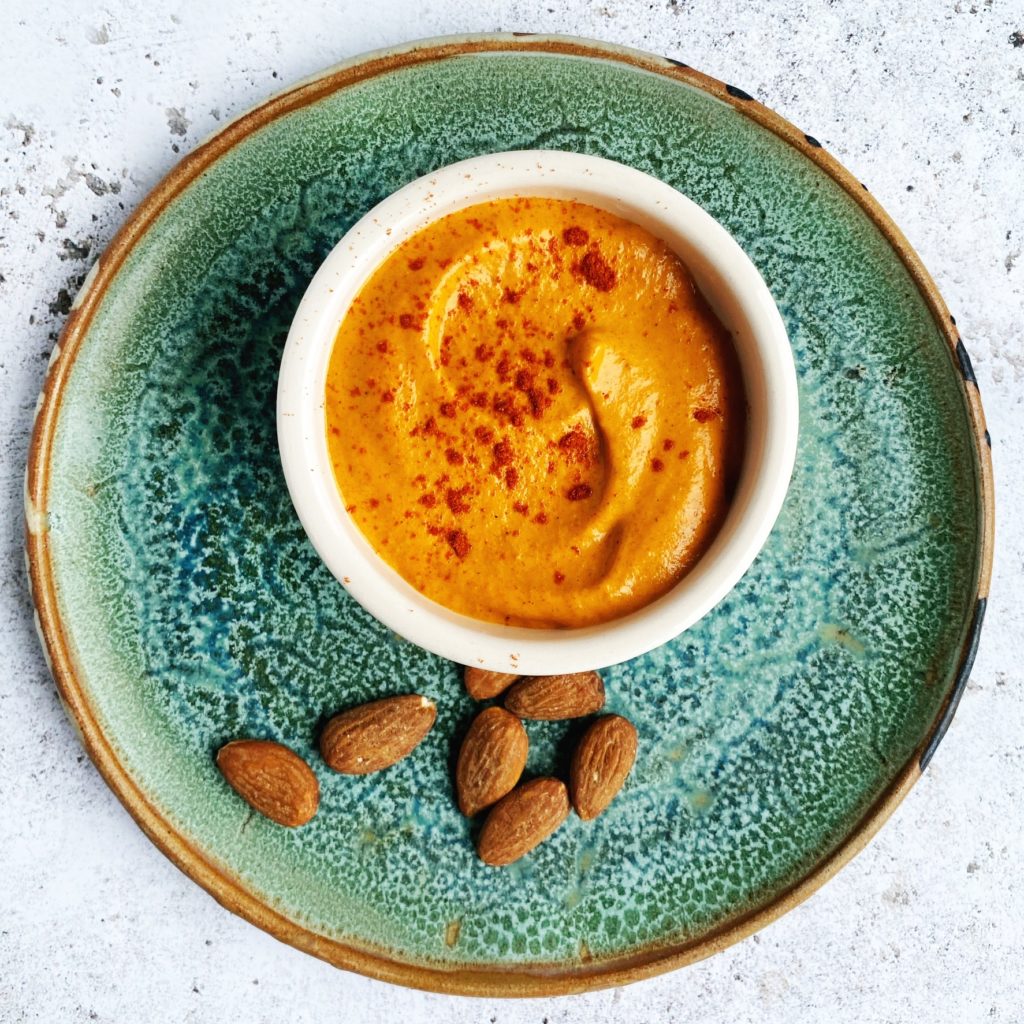
Method
- Roast the almonds in the oven until they just start to take on some colour – for about 5 minutes – or toast them in a dry pan on the hob.
- If you are roasting/grilling your own peppers, cook them on a high heat until the skins are blistered and the flesh is soft. Then cool and peel off as much of the blackened skin as you can, remove the stem and seeds. Otherwise just use one of our jars of grilled peppers.
- Put all the ingredients into a blender and blend into a silky, smooth sauce.
- If you like a thicker sauce, with more of a hummus-like texture, you can simply add more toasted almonds and blend again.
- Taste and adjust the seasoning if needed with more salt, smoked paprika or vinegar.
- Keep the sauce in a jar in the fridge and use within a week.

